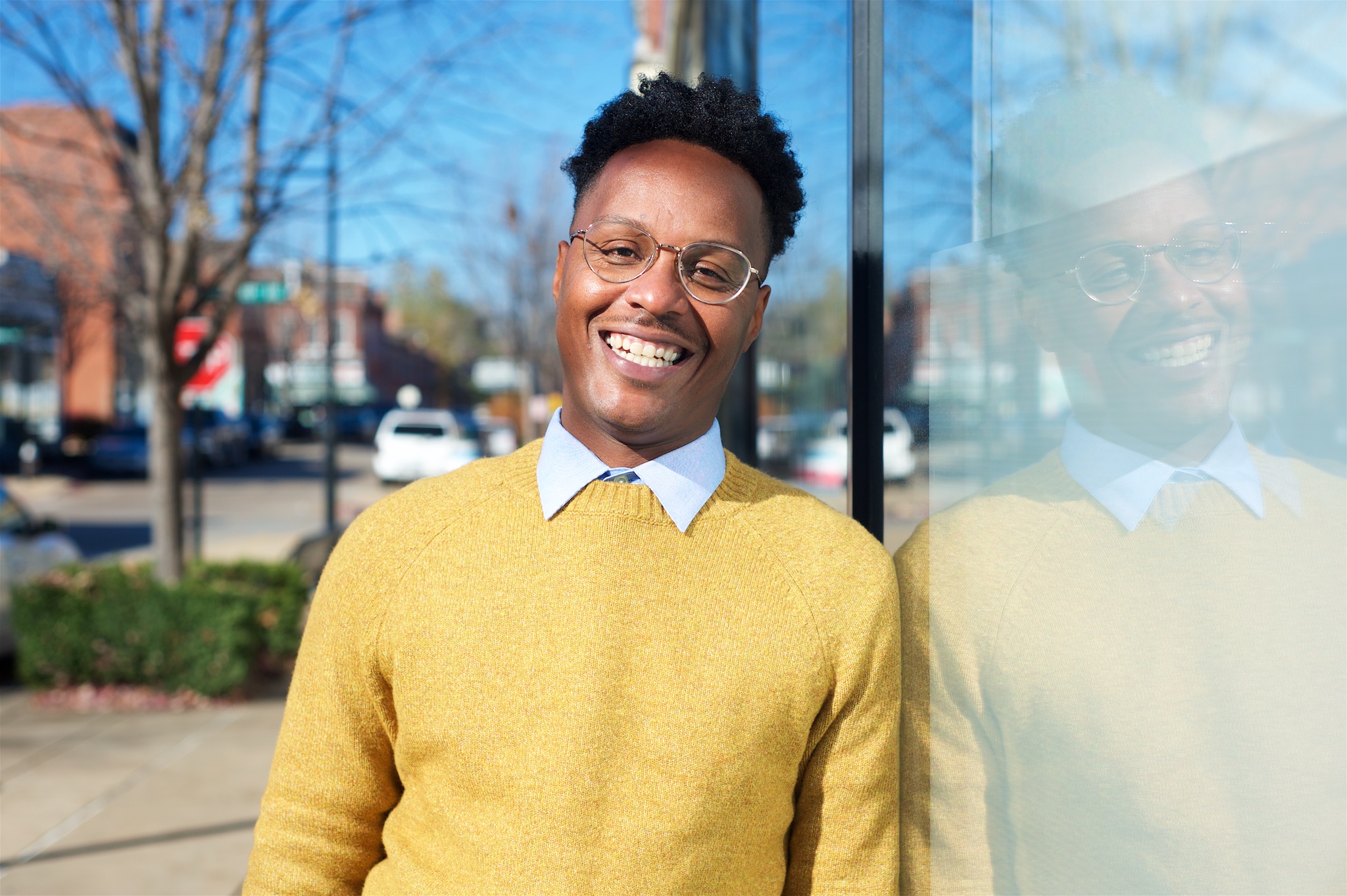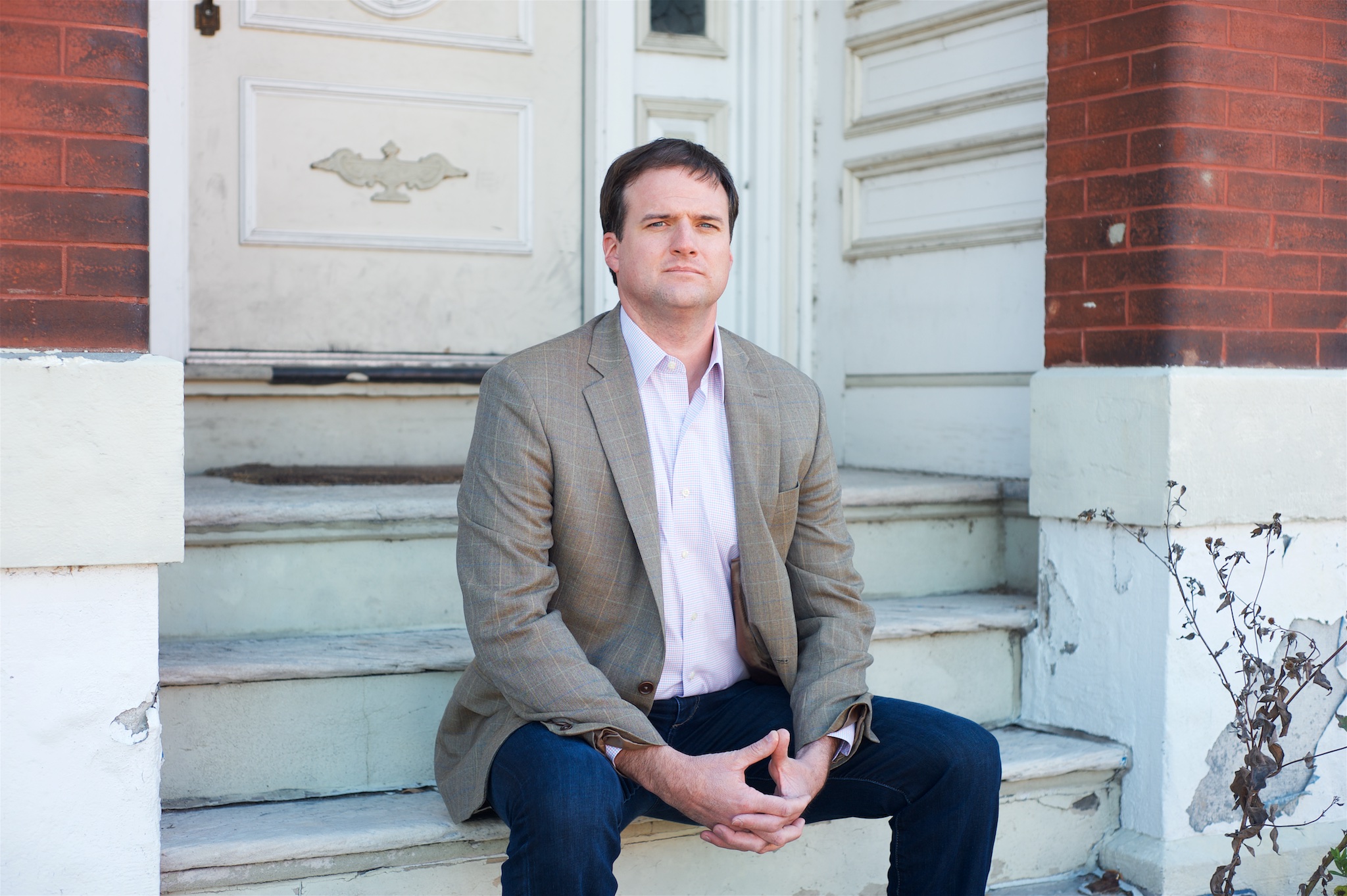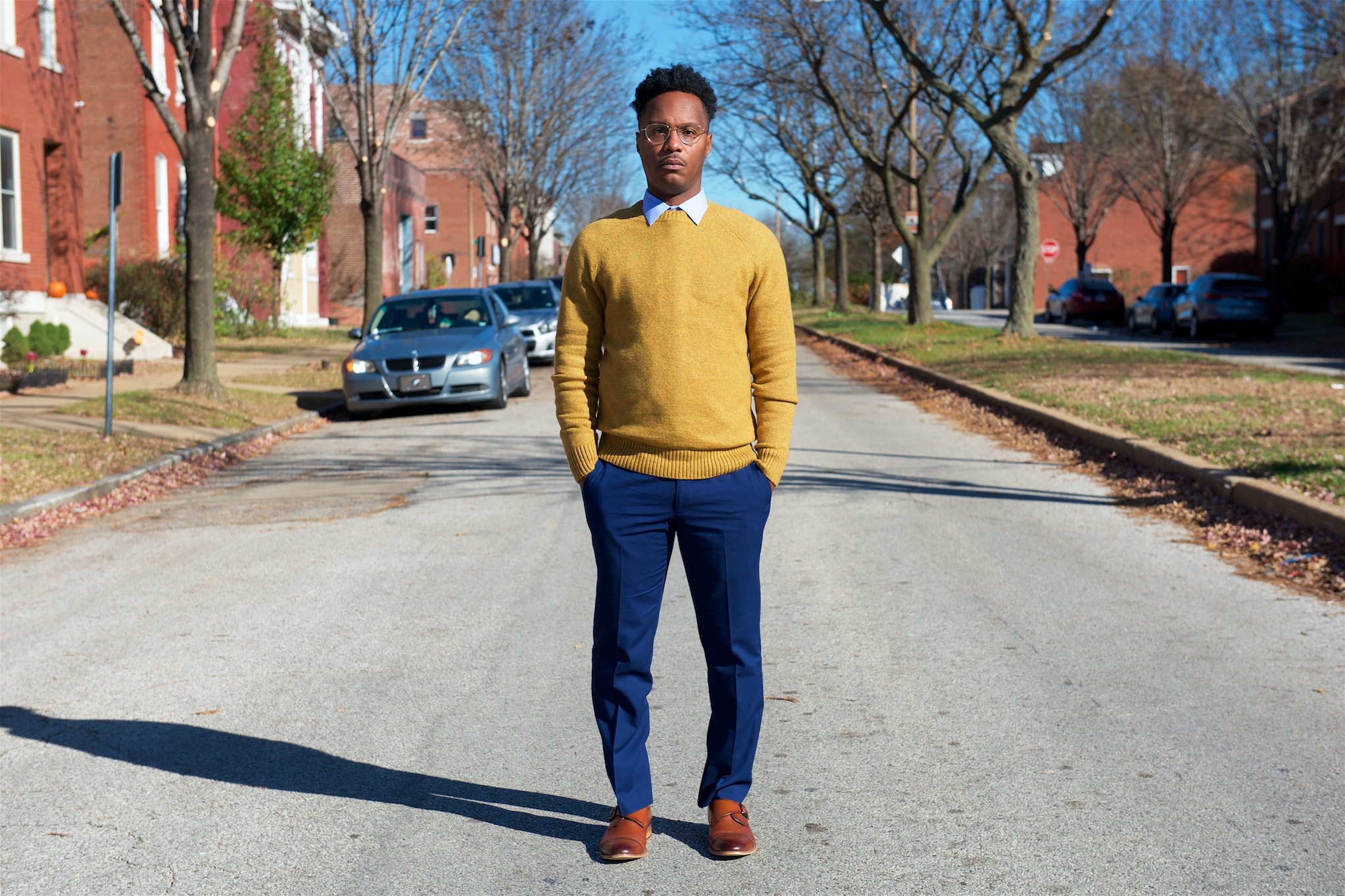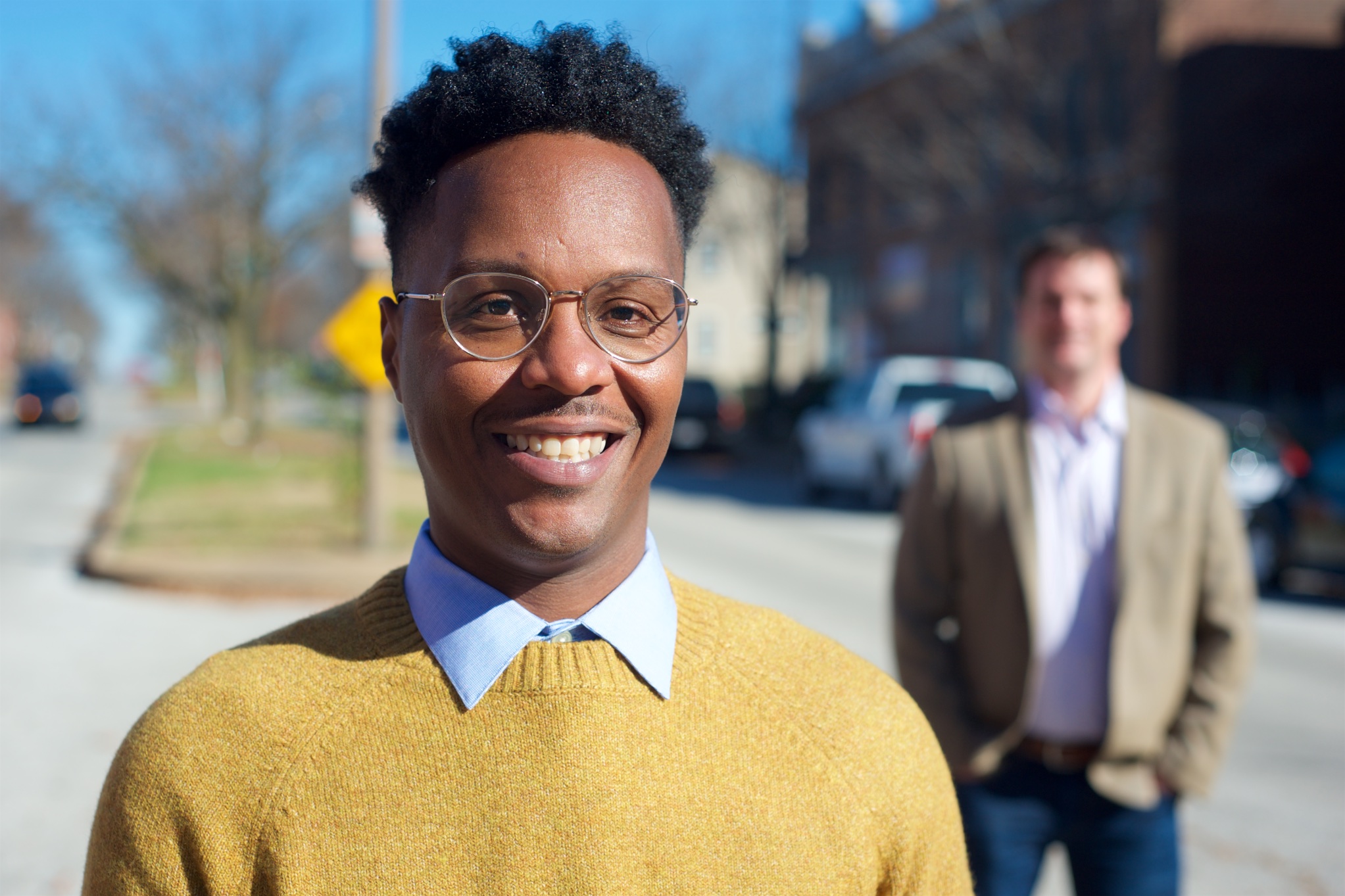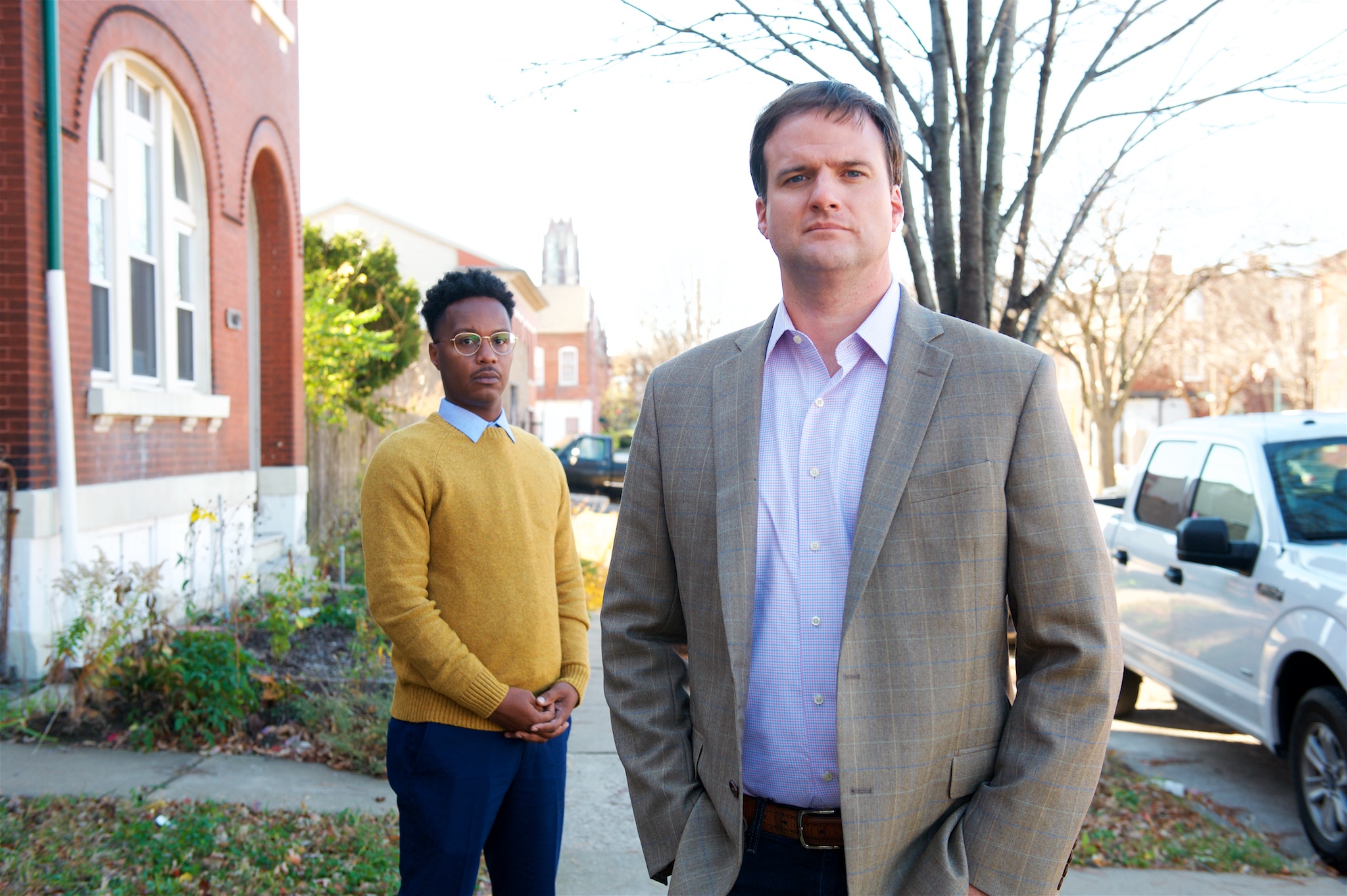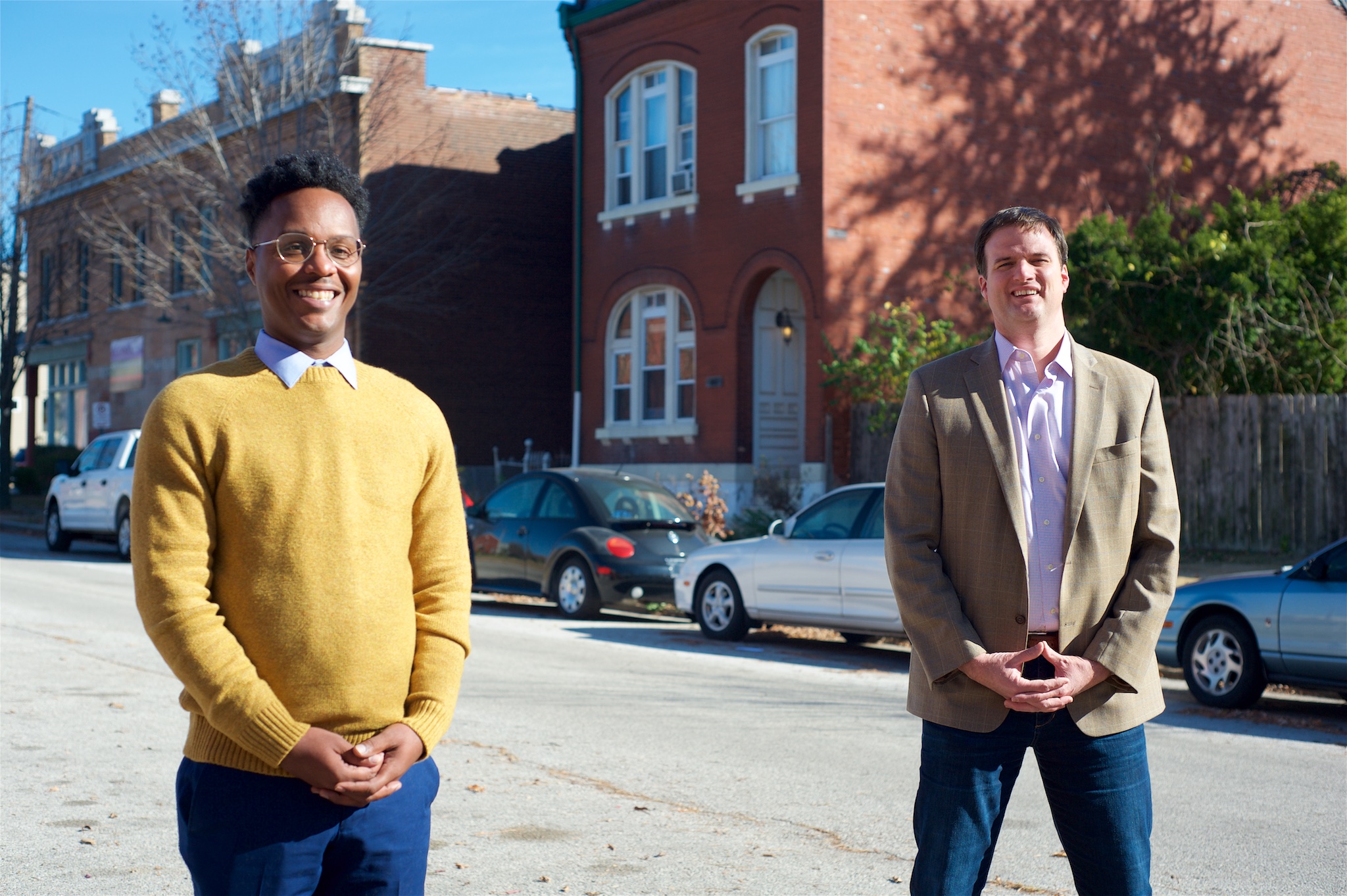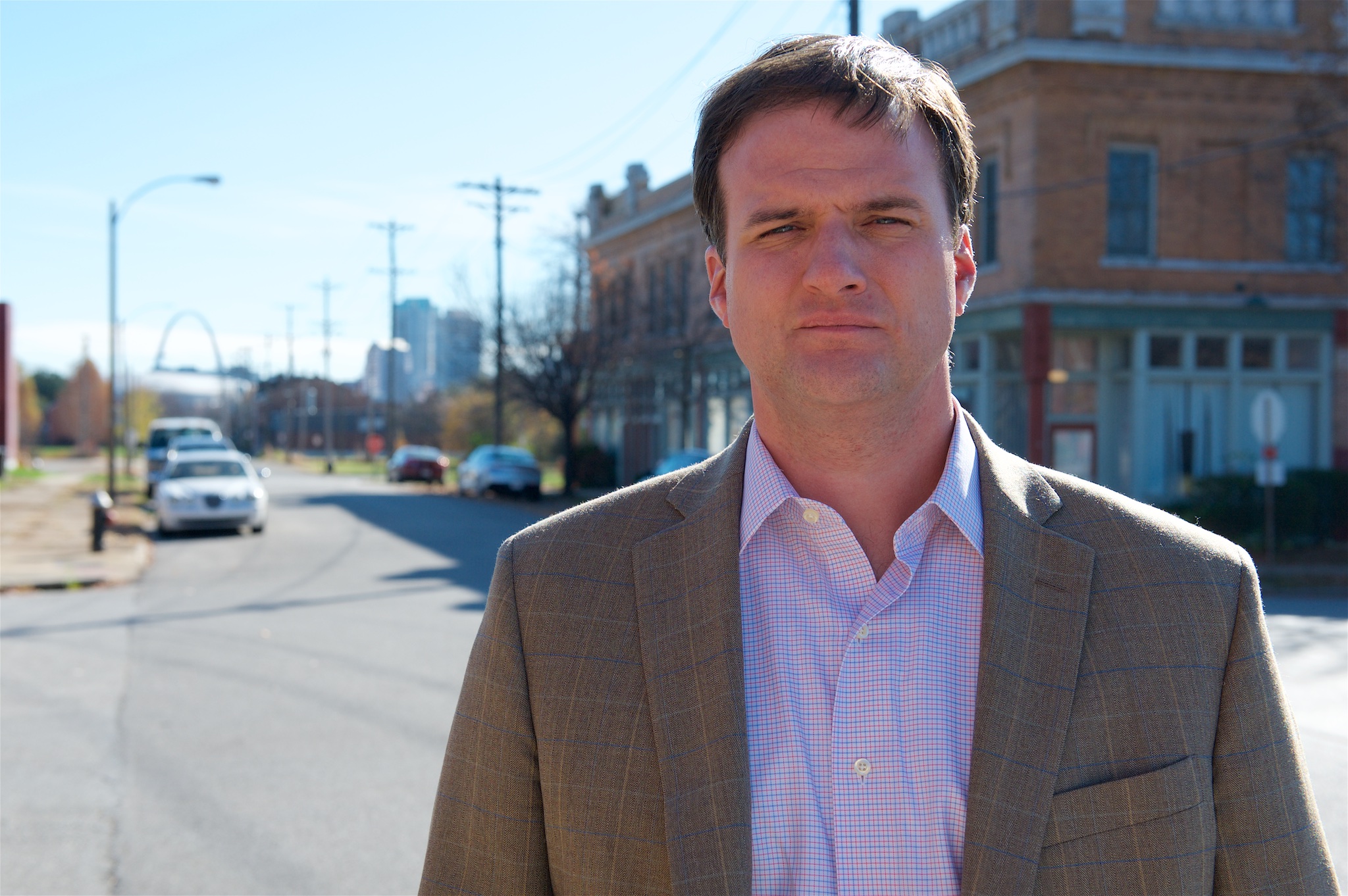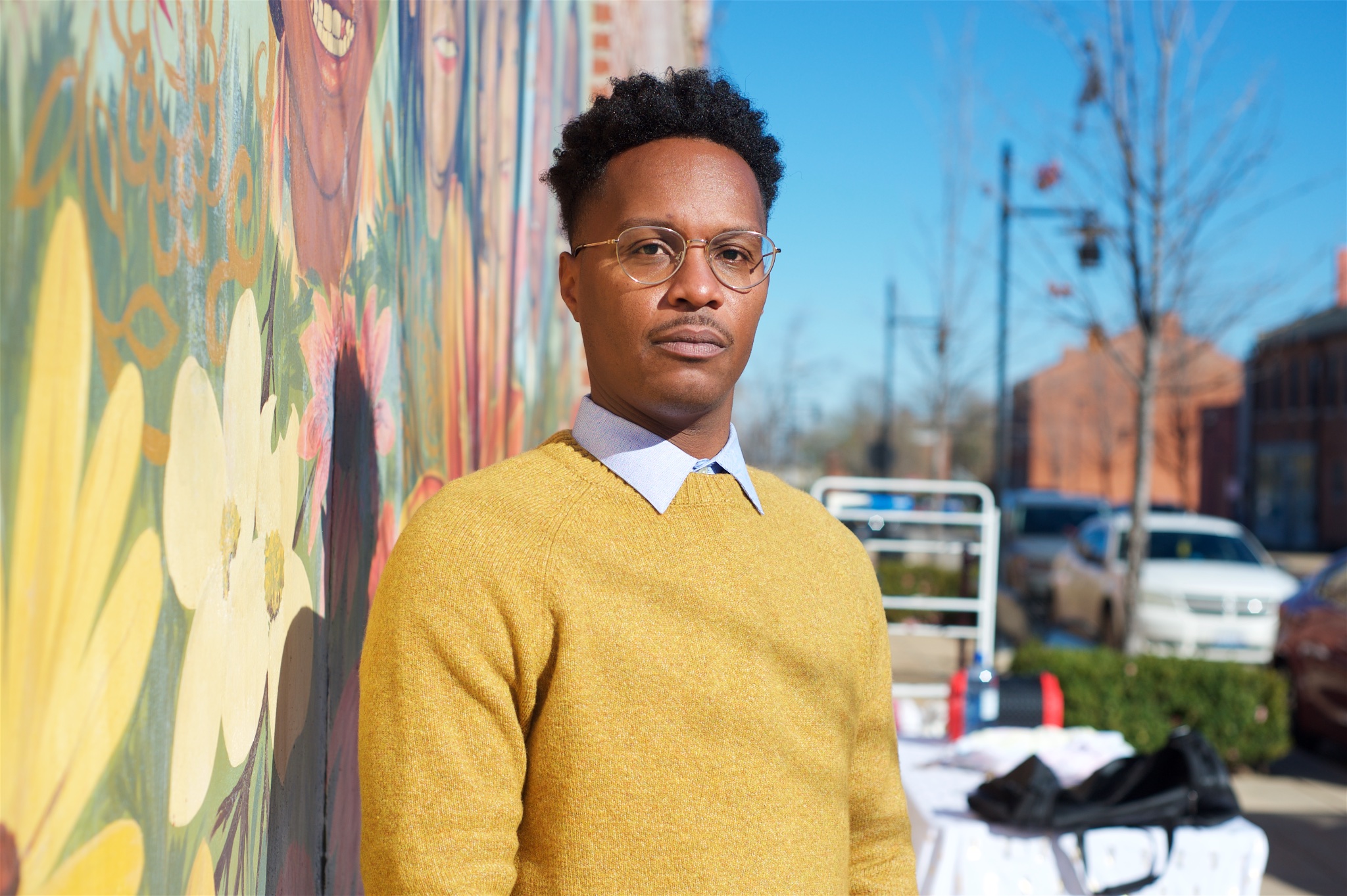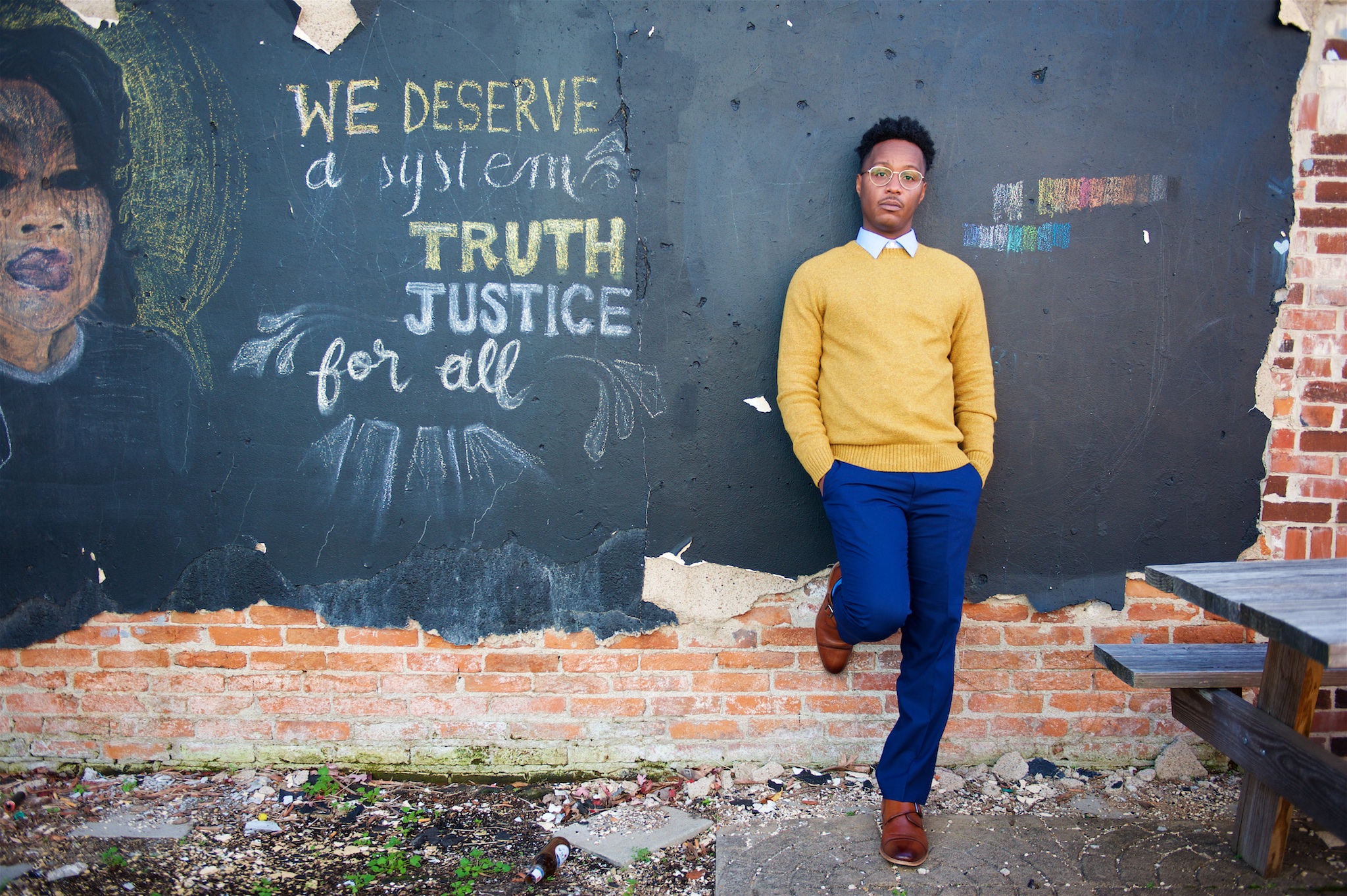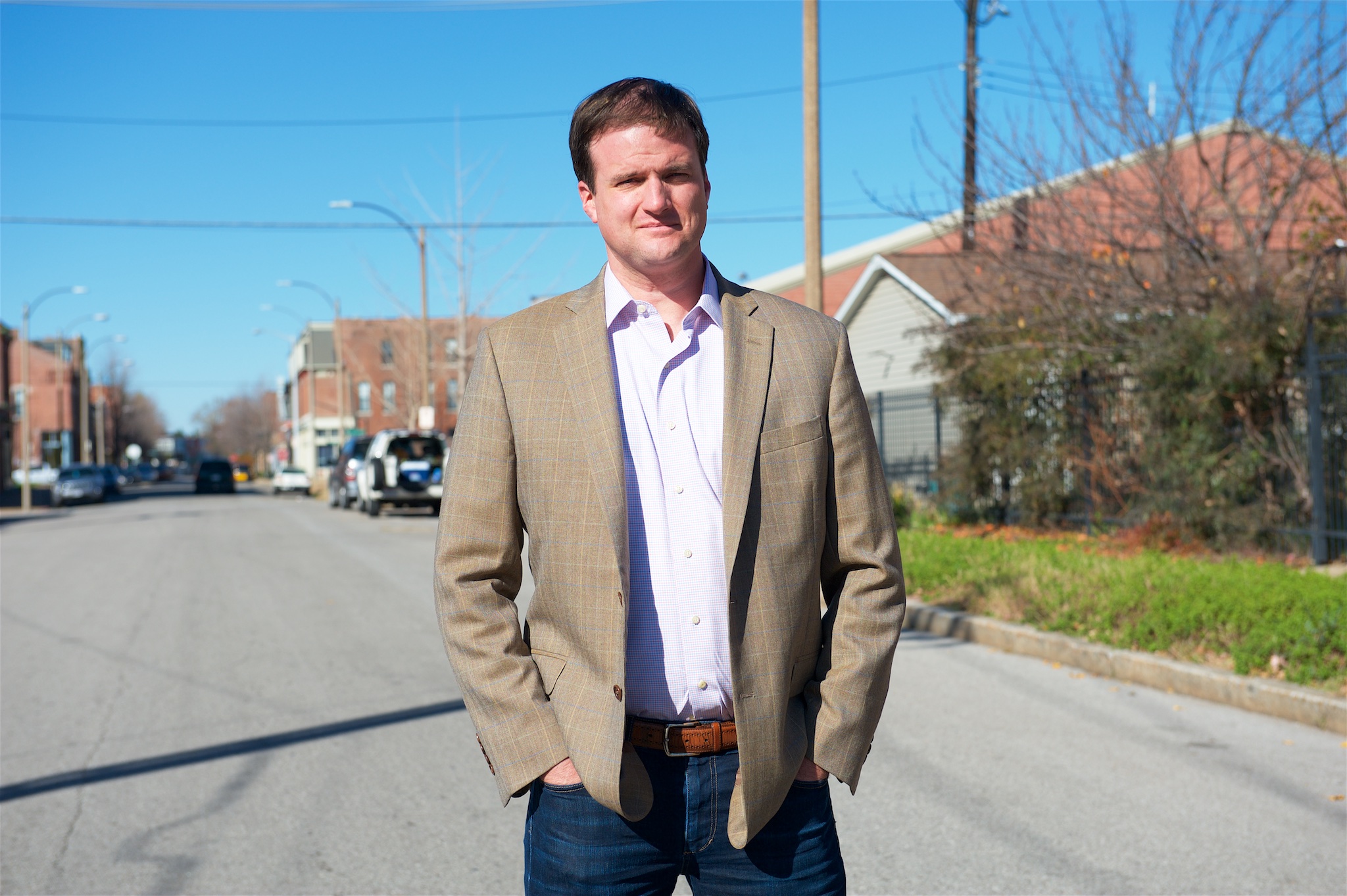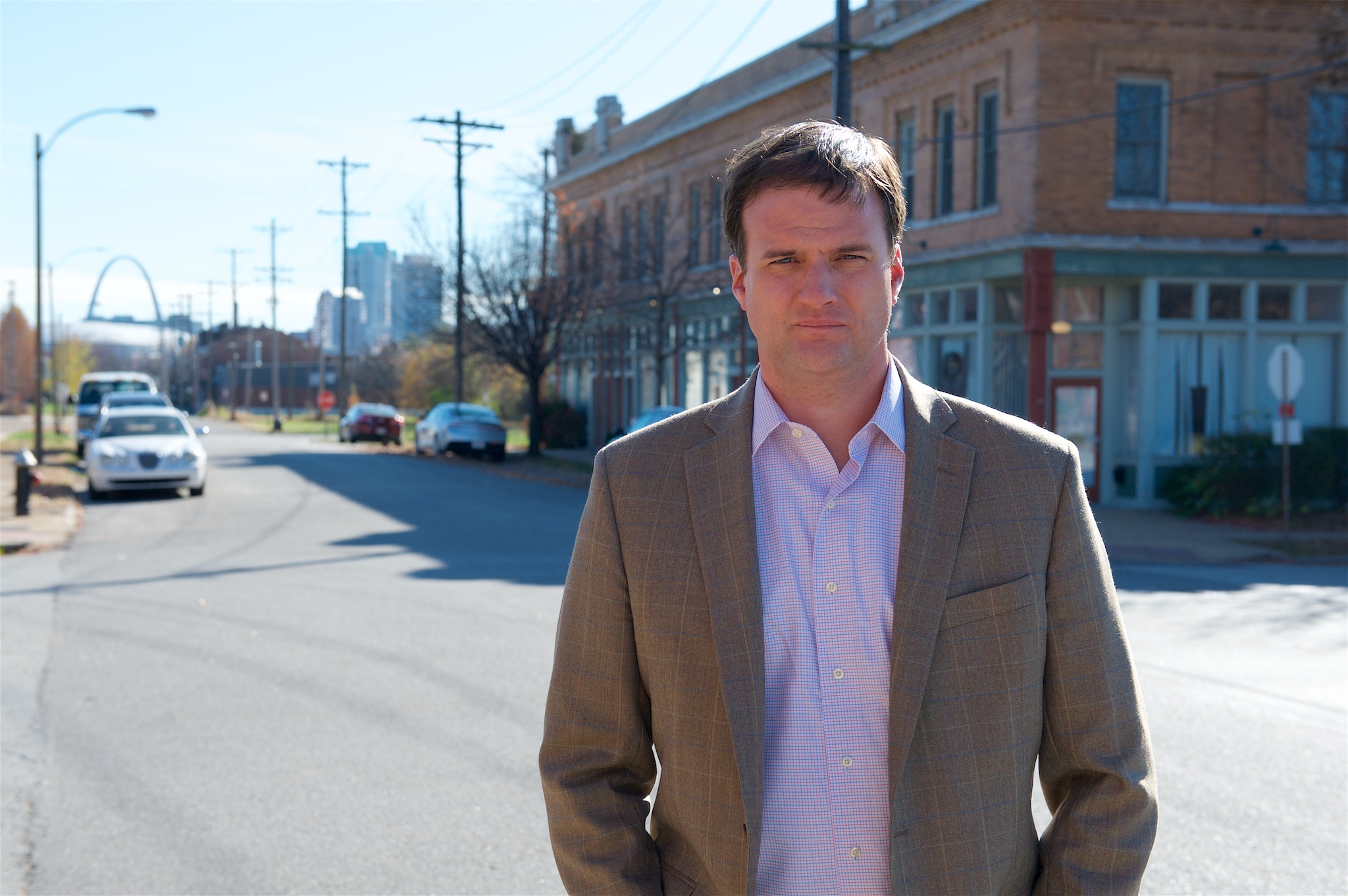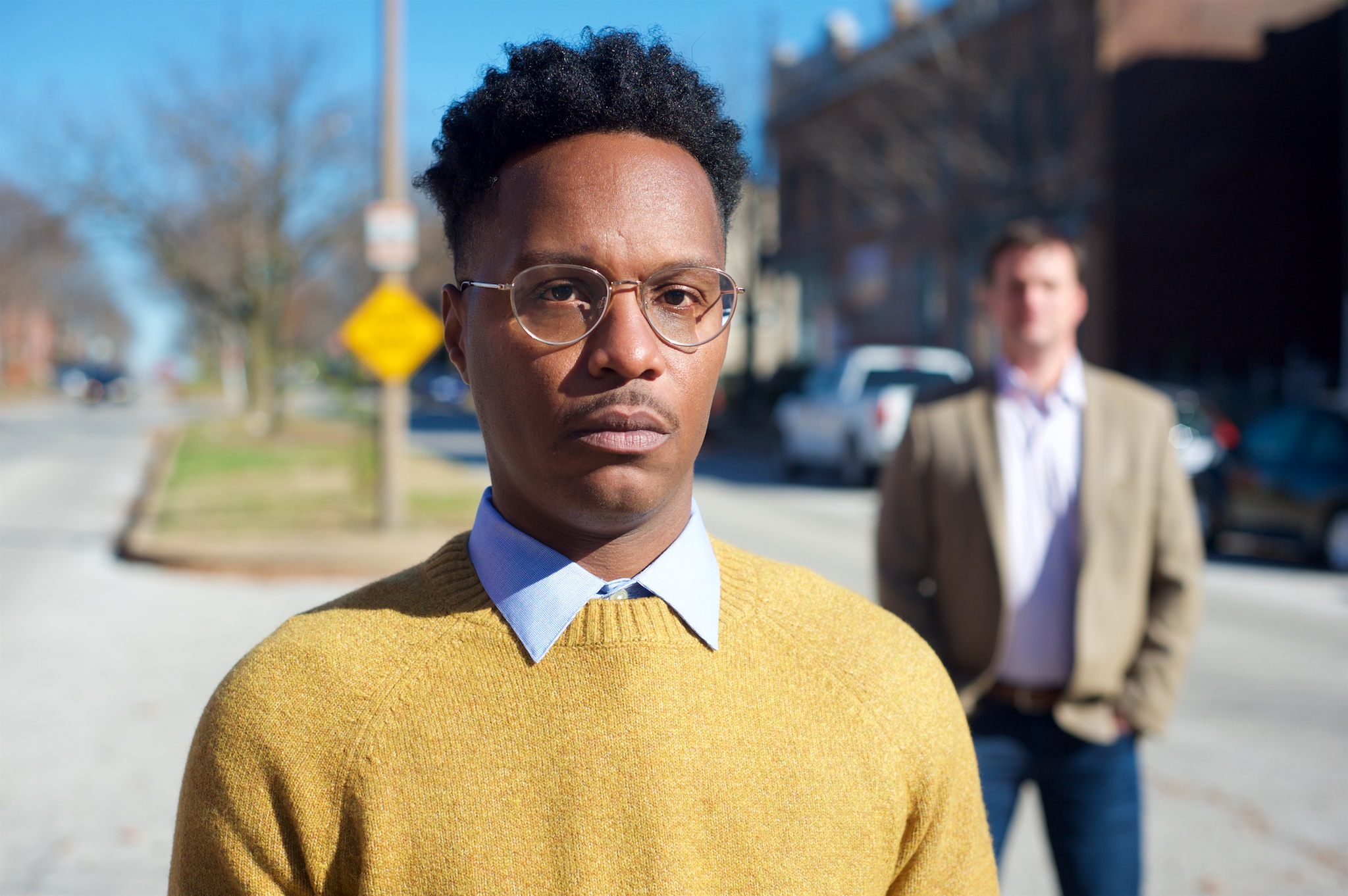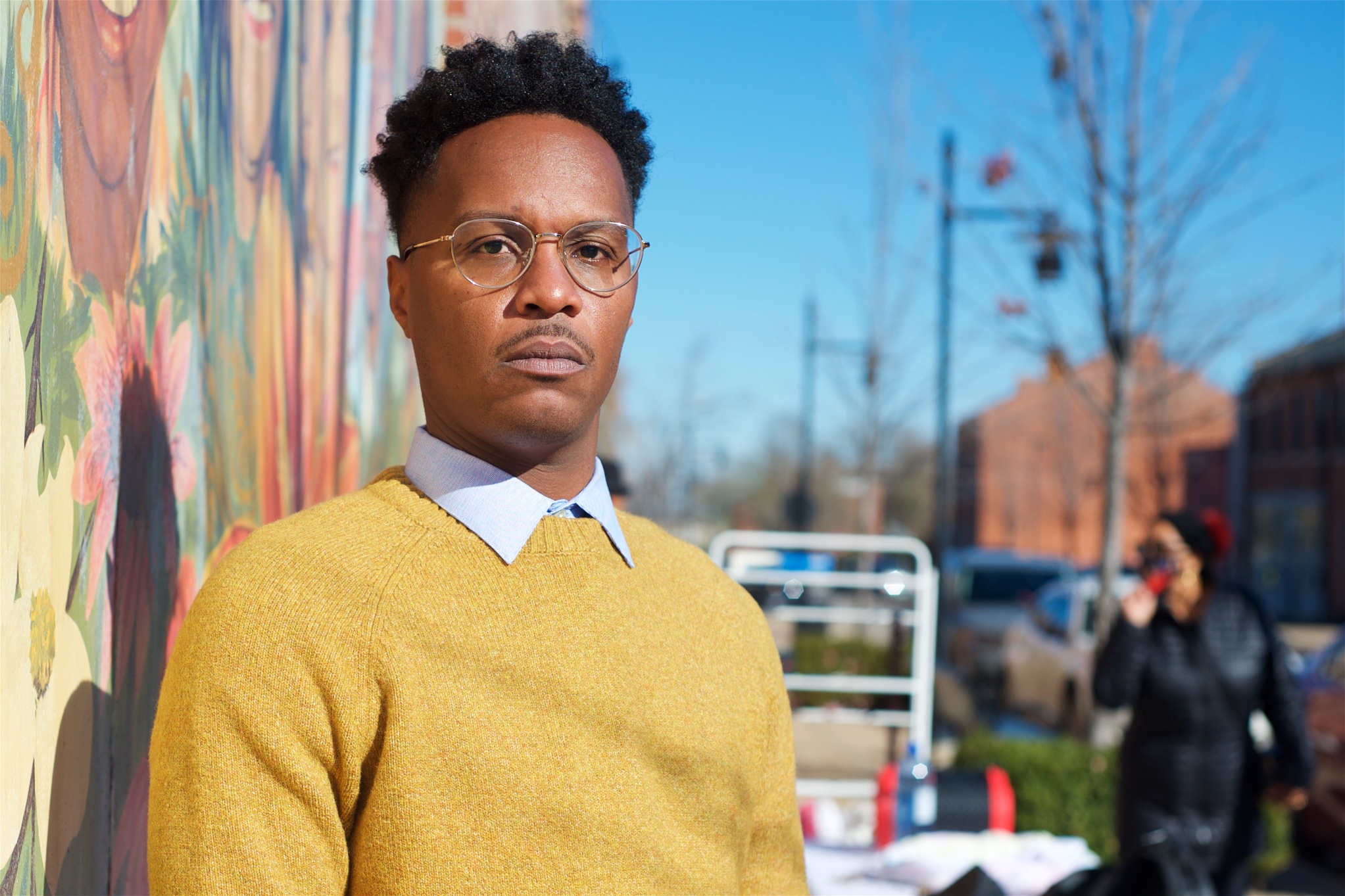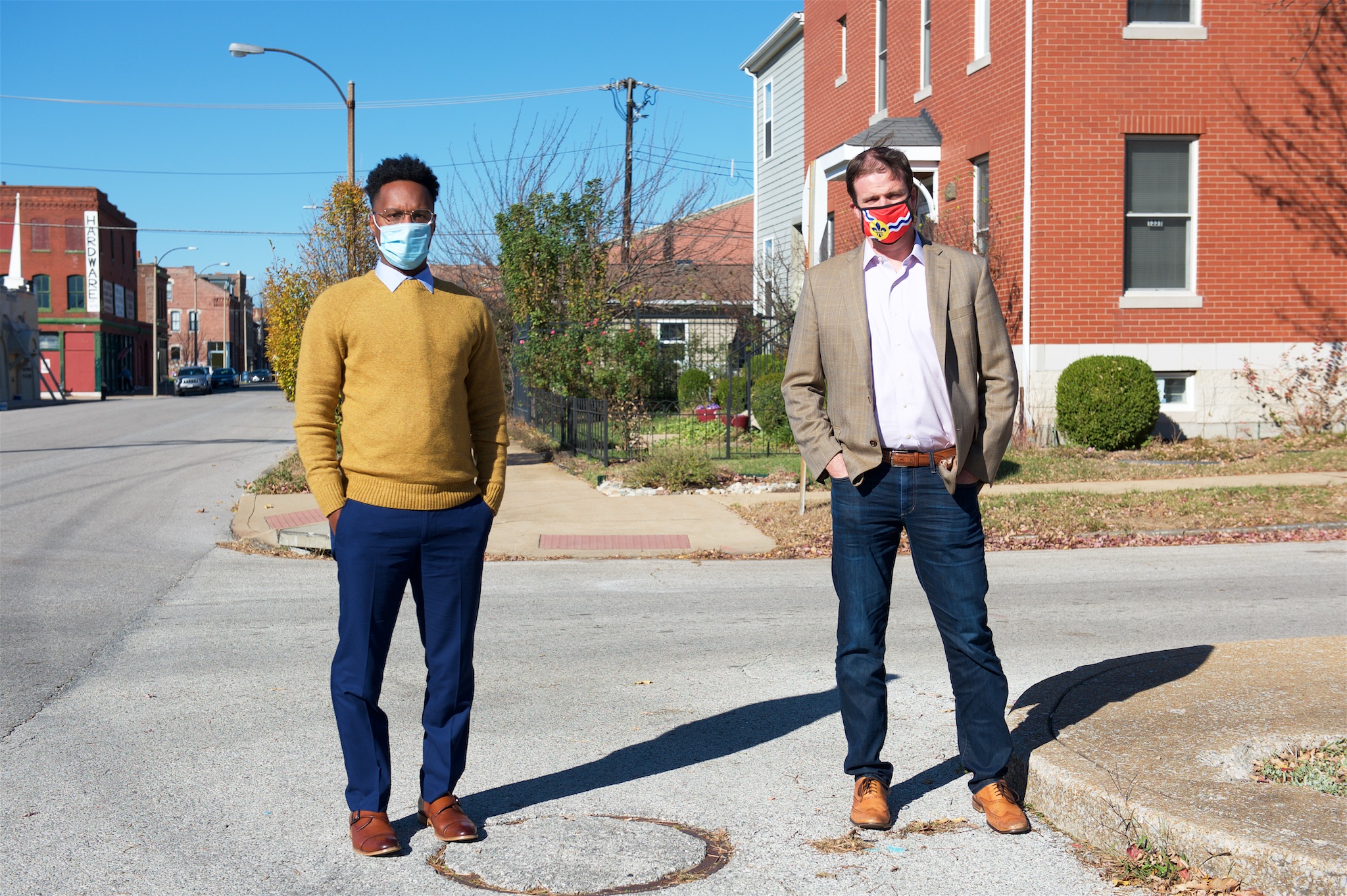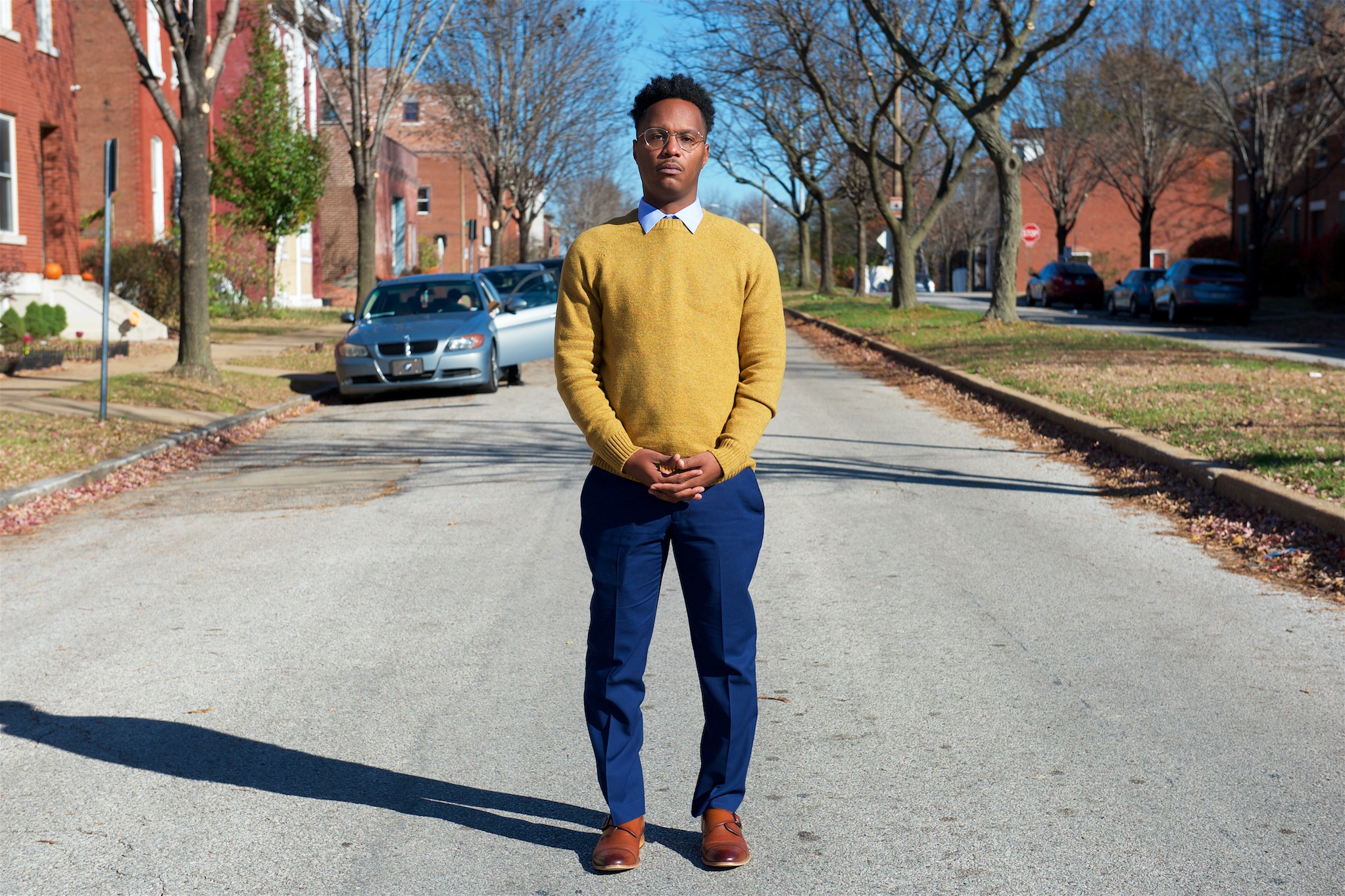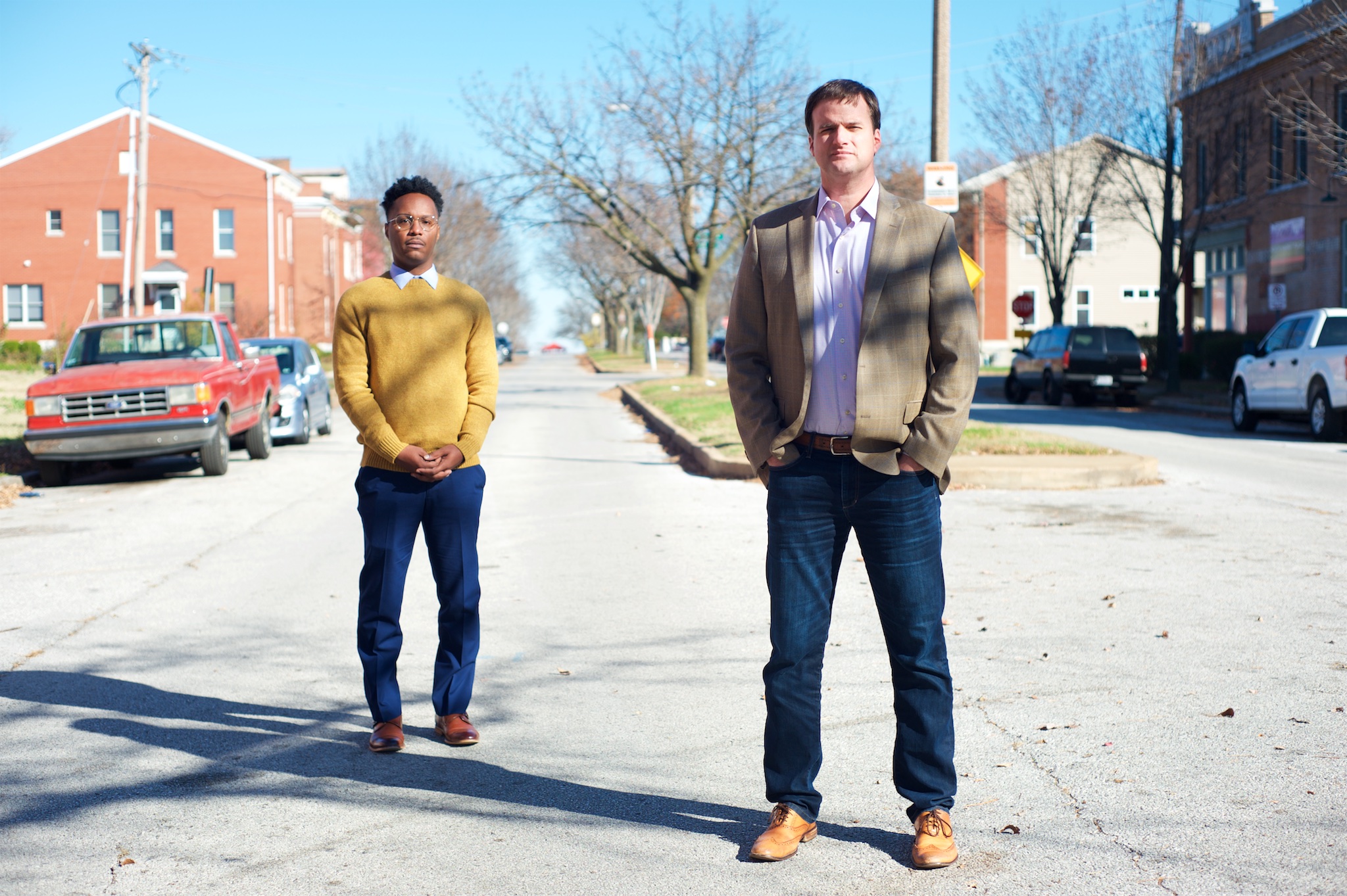Terry Harris and Dave Leipholtz
Photostory by Lindy Drew / Humans of St. Louis
Terry: Whenever I introduce myself, I like to say, “I’m Terry Harris, I’m from St. Louis, and I’m SO St. Louis!” For me, that is a prayer, a meditation, a vibration that’s all part of me. Basically, it means I love my city. I love St. Louis. I love the people. I love the craziness. And we fight for these things. I’ve been in education in the Rockwood School District for about 15 years. I taught African-American history. I started as a resource teacher, working with students who experienced academic difficulties. I worked primarily with students in the VICC [Voluntary Interdistrict Choice Corporation] program. And for the past seven years, I’ve been the Executive Director of student services in which I’m heavily focused on the social-emotional needs of students, teachers, and community members. I’m looking at topics like racial justice and transgender students, bringing all of their stories and faces to the forefront, and then trying to meet the emotional and academic needs of our kids.
Dave: I was born and raised in St. Louis and in many ways still figuring it out. In St. Louis, you can experience a lot of different communities in one place. And if you really want to get to know St. Louis well, it’s probably a lifetime journey. You’re never going to visit it for a week or come here for college and know it all right away. There’s just a lot of depth to it. Some good, some bad. To echo Terry’s sentiment, to love St. Louis is to love it for what it is but even more so for what it can be. Through the Center for Civic Research and Innovation [CCRI] we try and help support organizations driving the region and its positives towards really bold goals.
I’m a board chair for STL Youth Jobs, which works to provide summer employment opportunities for students and youth throughout the region by supplementing their educational experience with real-world opportunities. I’m also on the board of We Stories, which is intentionally seeking to push conversations on race and equity through reading and learning with your kids. Across everything, I see education for youth as opportunity and the key to the future we want. Part of having a successful St. Louis is having a more unified St. Louis.
How has segregation shaped the St. Louis region and how is it different here than it is elsewhere?
Terry: Segregation is embedded in our culture in St. Louis and we subtly do these things we all know like by asking people, “What high school did you go to?” The response automatically gives this image of the person based on where they went and their perceived intellect, income, and knowledge of things. It’s such a part of who we are. Language is really important. “I’m going to go ‘down’ to the City.” Or, “We only frequent ‘these’ places when there’s a baseball game.” Then, when we think about going the other way, going West, individuals are not necessarily allowed into certain spaces. “We don’t want the MetroLink to pass by our area.” Although we know people can benefit from riding it on both ends, what’s the perception of who’s riding the MetroLink and what type of energy they’re bringing to “my space”?
We’ve been wrestling with identity for a long time. It’s like the elephant in the room that we all see and we all know but no one is going to address it because we don’t mess with the elephant.
Terry Harris
St. Louis, and even Missouri for that matter, has been trying to find its identity since the Civil War. Like, we’re not going to fight with the South, but we’re definitely sympathizers. We’ve been wrestling with identity for a long time. It’s like the elephant in the room that we all see and we all know but no one is going to address it because we don’t mess with the elephant. So, “Black people can’t come to these designated areas after a certain time. And this area is just strictly for people who are trans, so don’t go to that area. This area is just for the rich, wealthy people and they want to have a certain experience.” We don’t cross those lines. They’re there. And we know it. We see it in schooling, restaurants, neighborhoods. With politics, look at South City St. Louis versus North St. Louis City. How can you be SO St. Louis and not be concerned with that? But that’s the elephant in the room and it’s been there for such a long time that we don’t touch the elephant. Then when you start touching the elephant, it’s like, “Hey, Terry, leave that alone. Don’t go there.”
So when people admit, “No, we need to break these things down. We need to talk about them together and what it means to really be one community,” I think that there’s that level of fight. We have to address the elephant. People don’t want to deal with that issue, because when you do, here’s what’s going to happen — it’s going to raise a lot of things. It’s going to raise a lot of feelings and you’re going to have to go through the trauma of experiencing it and of hearing stories and then you’re going to have to move to healing. So what makes it different is that St. Louis as a region, as an entity, we need therapy. And we need to commit to going through the therapy to heal. Are we willing and ready to heal our region? Or, are we just going to continue to experience this trauma and pass it on to our kids?
There’s a lot of work to do. And it’s hard work. Maintaining where we are now is easy. Even though it’s not working for all people, it’s working for people. But to dive deeper into our history and all the things that have happened to divide neighborhoods… You know, it’s wonderful to have the Gateway Arch. I love it. But the Arch wasn’t there forever, which means there were people who lived in places before these beautiful things happened. What happened to those people? Are we telling that story? It’s about reconciliation, but you can’t have reconciliation without having people tell their stories and talk about the pain and trauma that exists. In the moment that we can do those things, we can enter this glorious state of happiness, because we are a good region and St. Louis is a good place. I have a daughter who I would not want to raise anywhere except for St. Louis. But we gotta deal with our shit. We gotta call it out and do the therapeutic work we need to do as a region.
Dave: That’s spot on. St. Louis is so compartmentalized sometimes that you don’t even know what you may be perpetuating or getting wrong because the reality around you tells a story that it’s right. We mess stuff up and we say the wrong things, so we have to have a space that is welcoming to getting it wrong and working to get right. Even with the question, “Where’d you go to high school?” Growing up, when someone said that to me, I took it as, “Maybe we know some of the same people because we’re from the same place.” But it doesn’t speak to people who weren’t originally from St. Louis or didn’t grow up here. And it creates this kind of insider-outsider judgment reinforcing a system that’s not desirable and that has harmful impacts. It crystallizes some of the issues in St. Louis.
“They aren’t our kids. They don’t live in our neighborhood.” Mentally, if that’s where we set up our expectations, if we limit what we know and care about to a few square miles, then this type of siloed thinking will be difficult to overcome.
Dave Leipholtz
I was talking to a friend and they were having conversations with a few folks about, “How do we change the racial divisions and the lack of equity in St. Louis?” What he said made me pause. Because for over a century, it was very clear what institutions, companies, and the government thought of Black people in St. Louis. And that was, “You don’t go to these restaurants, you don’t go to these hospitals, you don’t go …” Those divisions were stark. Everybody knew them. And until we get to that point on the other side, so that it is explicit that everybody knows we are an inclusive community — and just being a good person isn’t good enough because these systems perpetuate themselves — until we have that kind of clarity as a community, we’re not going to move the ball. That really stuck with me because that type of change is hard and messy. It’s impolite when it involves tough conversations in which we’re going to say stuff and have to admit we’re wrong. A lot of that wrong isn’t even intentional, it’s just perpetuating systems that perpetuate divides. Like, when it comes to the different levels of opportunity we accept for students across the region: “They aren’t our kids. They don’t live in our neighborhood.” Mentally, if that’s where we set up our expectations, if we limit what we know and care about to a few square miles, then this type of siloed thinking will be difficult to overcome.
Terry: There’s a piece David said that I really appreciated — even when we’re getting it wrong, there’s a reality saying we’re getting it right. I was thinking to myself, do cities have nicknames? Like, the State of Missouri is the “Show-Me State.” I don’t know if that’s a thing elsewhere, and I guess I’m not so St. Louis if I don’t know that, but our nickname should be the “Vulnerable City.” We’re gonna get it right and we’re gonna get it wrong, but the way we get there and vacillate between the two is in being able to be vulnerable. To David’s point when he was having a conversation with his friend and his friend said, “Hey, for over a century life was like this.” There’s a level of vulnerability to be able to call that out. The vulnerability is, “I need to get these things out so we can heal, so we can do the best thing so that all of our kids are well, so all of our people are well, and so we can be a better city.”
Dave: That is just a perfect way of phrasing it. Vulnerability is the key component. We need to accept responsibility and accept being wrong even when we mean well. Instead, we recoil and get defensive. I mean, I get way more wrong than I get right and I’m still learning a lot. And that burden falls heavily on the Black community in St. Louis. This effort is called #StillUnequal and it’s true.
How does segregation influence the educational landscape or playing field that we have today? How do you see it show up in the work you’ve done? What are students, administrators, and teachers saying?
Dave: Before I went to law school, I taught for a few years in the Lindbergh Schools District, one of the best districts in the state, and saw the VICC program firsthand. What always stuck with me was how disappointing it was that that was the best we could do as a region. I saw kids who got up way before I did as an adult being paid to do a job and, oftentimes, they got home after I did. They had to do so much more to get an education I know I took for granted. So VICC said, “We need to do something better,” but it didn’t fix the system. It tried to provide opportunities, but it didn’t get to the heart of the issue in our region.
Getting to know the kids and looking at the data in my job now, I still see what those students had to do to get an education that was handed to me. Opportunities like AP courses were always part of my educational experience. I didn’t grow up wealthy. I was middle class, but opportunities were always there for me. In this region, education and what it means to get one has so many meanings. We talk about it explicitly when we’re picking colleges, like, what are the majors and extracurricular opportunities? Then when it comes to education in our region, we tend to focus on outputs and test scores to make sure we’re providing opportunity, but there’s not a report that comes out every year saying what is being invested in these kids or what those inputs and opportunities are. That needs to be more of a focus than a test score.
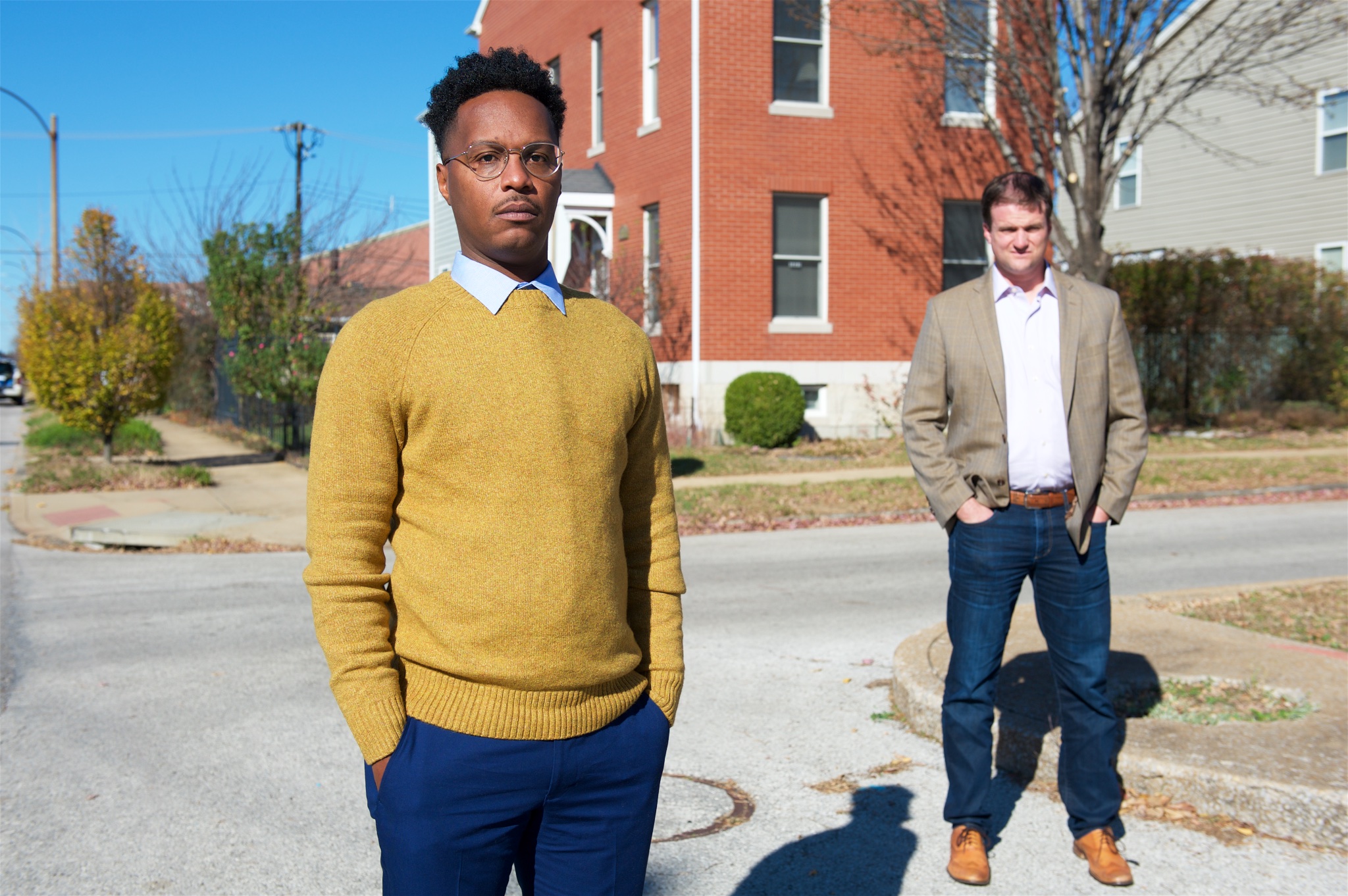
Terry: There’s no report on input and investment on kids. And the reason we don’t have that makes sense because that’s going to tell a story. If you are a person who received all of these inputs and investments in your schooling, in theory, you’re more likely to have certain outcomes. So if you don’t have those things, then you’re more likely to not have those outcomes. People don’t want to tell that story. As an educator and a person who has done a lot of work around equity, I talk a lot about this stuff and White privilege is one of those things that comes up. Although the Forward Through Ferguson report to level the playing field in St. Louis gets to some of that, like in terms of AP classes and what teachers are paid, this is a larger conversation at the intersection of White privilege and structural racism.
As a student who grew up in the VICC program, I heard a lot of people say things like, “These parents don’t care about their kids,” and I just don’t understand. I work in a district where 85% of the teaching staff as well as students are White. When I used to give presentations, I’d say, “Raise your hand if you have a kid under the age of 10.” If there were about 50 people in the room, most would raise their hands. Then I’d ask, “Would you get your kid up at five o’clock in the morning, put your kid’s clothes on, get their backpack, and then put them on the bus — a bus! — at six o’clock in the morning, in October when we know it’s dark outside, and the bus is going to drive 15 to 25 miles away from your house?”
And when they get off this bus, they’re in a classroom where only one or two kids look like them. Culturally, their experiences are different. Maybe the realities of TV shows and what they like to play with are completely different. And they are to sit in that room, with a teacher who doesn’t look like them and who there aren’t too many examples of for being affirming and validating, and then learn. Like, they are truly the outsider. And then, because we know research tells us that kids who are involved tend to do better, which is true. But that parent, that mother, is like, “Okay, Terry. Son, I need you to stay after school to play soccer or football or go to the chess club, but you’re going to do something after school.” So, Terry does that.
Then, school is over. Terry gets on his bus. It’s dark outside. He hasn’t had dinner. The last time Terry ate actually was at 11:30 a.m. And here it is 5:30 p.m. and Terry’s on the bus. Long bus ride. No one stops. No bathroom breaks. Get home at 6:30 or 7:00 p.m., depending on where I live. Go home. I’m exhausted. Now I have homework to do. I don’t really talk to my family because, you know, I’m tired. And I get up every single day and do that over again. You tell me, teacher, would you do that for your child? And 99% of the people say no. Then we have this language and use these coded messages that says Black parents don’t care about their kids.
The VICC program is a sacrifice of love. Period. Because I don’t know if I could put my daughter on the bus to come all the way out to Rockwood like I did at five or six years old. I don’t know if I could do that.
I’m a product of the VICC program and support it. But here’s the flip side. As a student who participated in it starting in 8th grade, you also have to think about this: When you ask your mom as a 4th or 5th grader, “Mom, why do I have to go to this school all the way out here? My friends who I play with in the neighborhood go to that school, I want to go there,” and your mom says, “No, son. You need to go to this school because this school is a better school for you,” your mom is really being a mother and truly believes that Lindbergh, Rockwood, Clayton, Ladue is a better school for you. But mom, if she’s not conscious, doesn’t understand the messaging she’s instilling in her child. Because now, these kids are leaving their neighborhood, and traveling an hour away from their home to go to a school that their mom and dad and the people in their community say is better. Then everything in that area becomes better. The housing is better. The interaction between police officers — better. The grocery stores — better. The sidewalks and the clean visualization of the community — better.
So the question really becomes, what is the incentive of that Black kid who went out to Lindbergh or Rockwood to then come back and live in the City and try to take care of that city? This is how White supremacy and racism work. This is how these systems are built.
Terry Harris
So if all those things are better, but then I come home to my neighborhood — what does that make this neighborhood? As a Black male student in the VICC program who grew up in North St. Louis City (and who was probably a little awkward and weird and stayed in his head a lot), I then went to an all-White school district and was the only Black person in all of my classes. Then I get older and I start to piece these things together like this is the messaging that’s happening. So the question really becomes, what is the incentive of that Black kid who went out to Lindbergh or Rockwood to then come back and live in the City and try to take care of that city? This is how White supremacy and racism work. This is how these systems are built. No one has to call me the N-word. No one has to tell me I’m inferior. In essence, your community is telling you that when you’re told, “Let’s go to this part of town. Let’s go to this school.”
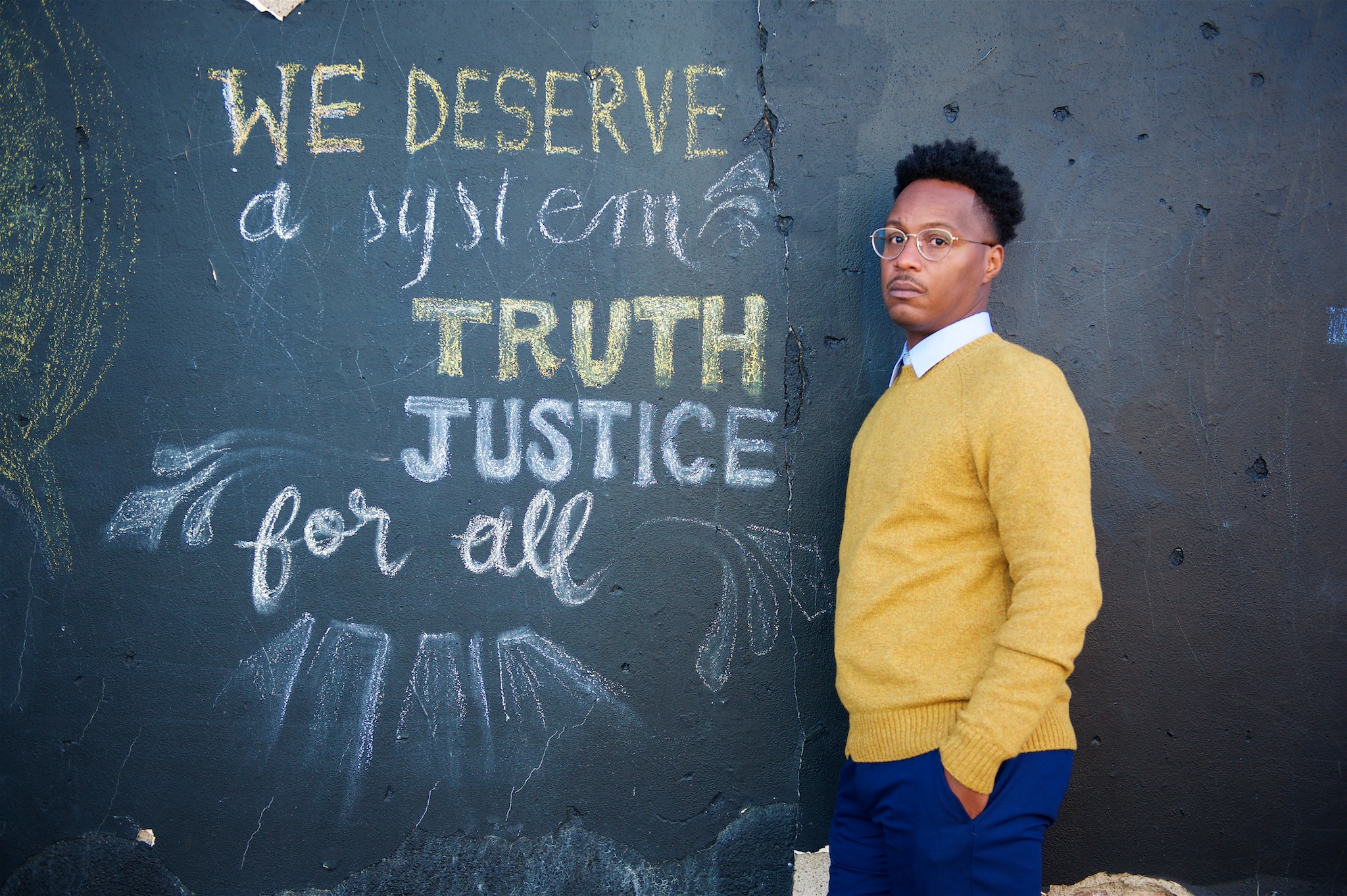
The reality is that St. Louis has to experience a level of shame in understanding that Forward Through Ferguson just came out with this report showing there are no White school districts in our area, none, that do not offer calculus, yet only a small percentage of Black school districts do. That stuff is by design. We can easily fix that, too. We can easily allow kids to virtually tap into other spaces so they can get that right now. So, say a kid is a genius, he’s at Clyde C. Miller Career Academy High School, and they don’t offer calculus. But we all know this kid is a genius. He’s going to be an astronaut. He’s going to figure out a way we can live on the moon, that’s how crazy brilliant his mind is. What are we doing as a system to then expose that kid to all the things without saying, “Guess what? You have to leave Clyde C. Miller.” Maybe the kid and his parents don’t want to do that. Because when Terry did that in 8th grade …
Literally, the only time I saw Black kids was when we were on the bus going to school or going home and when we sat at the lunch table. None of my teachers were Black or teachers of color. I didn’t know who Green Day was until I went to Rockwood. And I’m not saying anything was bad about that. I’m just saying, what messaging are we telling these young people as we’re taking them out of their own community? White kids aren’t leaving their community to come to some other school, because they have this understanding that, “Our community is great. We are wonderful.” That’s the stuff we really have to wrestle with. Then, what do we do as a region?
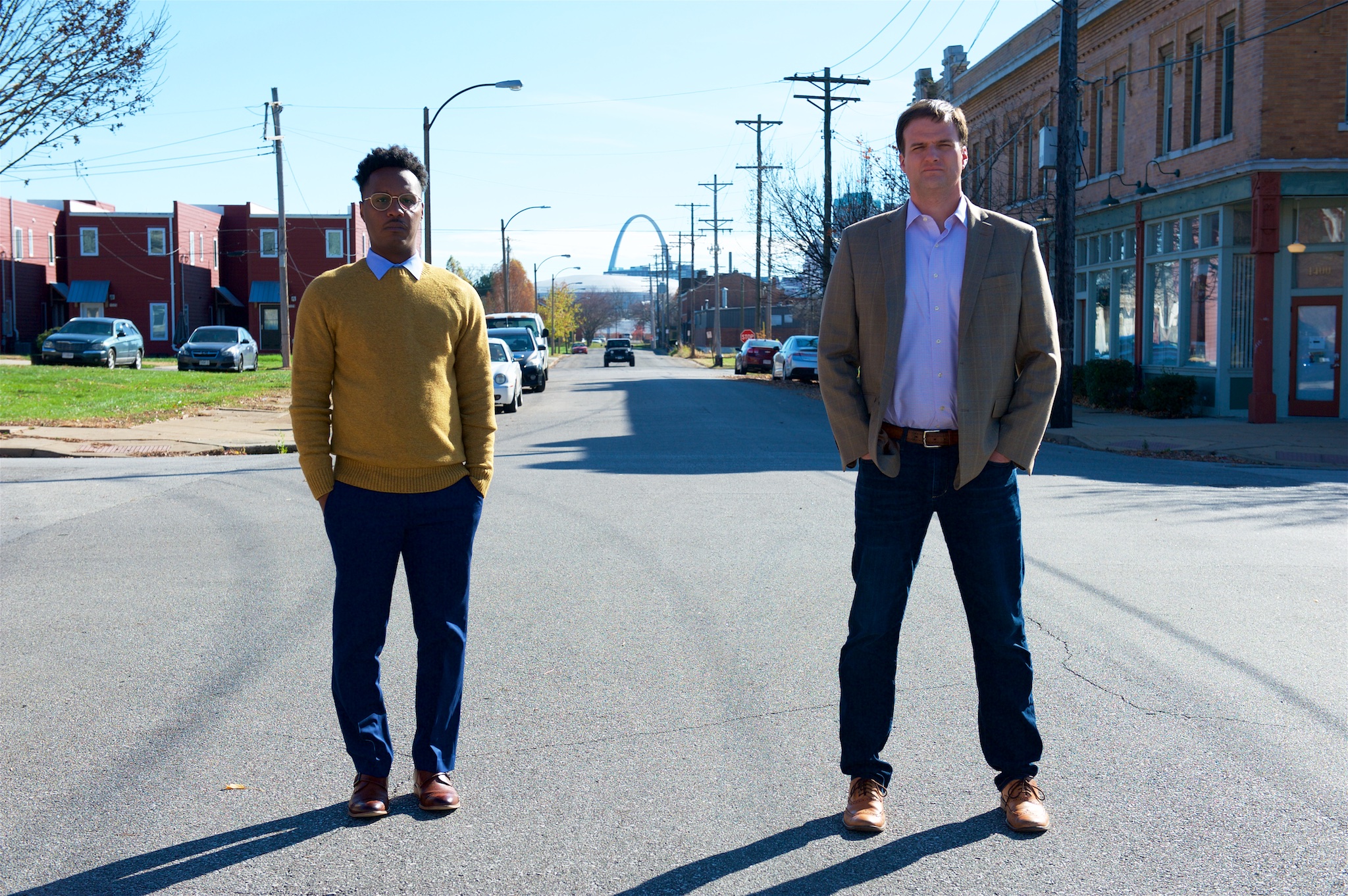
That’s what David and his team are working on to call these things out to say, “You can love North St. Louis and go to Vashon High School or Roosevelt High School and still take all the wonderful classes. You don’t have to leave your neighborhood. You can be okay. You can go to Harvard. You can go wherever you want. And, if you want to leave your neighborhood, then that’s an option, too.” But no kids should leave their neighborhood because they or the family perceive some other public school to be better. Leave your school because you want to go to a private or parochial school for whatever they may offer. But a public school? That’s insane. That’s dangerous.
Dave: That is a perspective beyond anything I’ve had. Growing up, I went to Catholic schools because my grandparents went to Catholic schools. But in a lot of ways, having such a large Catholic school system in the City and County probably was another system that had intentional and unintentional impacts. I was talking about the City school system with a friend of mine who has young kids as well, and to Terry’s point, what’s the thing that can reinvigorate and have people be committed, invested, and proud even if their kids didn’t or don’t currently attend the local public schools? The conclusion we came to was that if everyone just sent their kids to public schools, things would change because the perspective would change. And we would really all be in it together.
Growing up in the City, there was a similar phenomenon in which kids would go to schools in other places where they could get certain opportunities. One of the underlying issues among all of this is that when you’re a parent, you give yourself permission to be super selfish about giving your kids the very best. That’s your first priority. And for a lot of folks, that means getting the most advanced courses, the most resources, the most for your kid. So we give ourselves permission to not embrace the larger systemic issues because we’re trying to do the best for our child, and how can anybody fault that? But, it’s a micro way of looking at how we perpetuate systems.
All of the things that come with some of the local options for investing in and being committed to our public school systems — those are becoming more of a priority for people. Forward Through Ferguson and conversations we’re having as a region are having an impact. And one of the biggest issues in St. Louis is all of this requires a lot of intentionality because this stuff is so baked into the education system. Terry talked about history and for the longest time we didn’t talk about these issues at the level and frequency we should have considering how these systems perpetuate. It just used to be about the micro and local realities of how people live shaped their decisions, but it didn’t take the larger impact of the system into account. Now that’s changing and that’s great, but there’s still a long, long way to go.
Is there anything that worked about the VICC program? What should people in the region and in education do to ensure we don’t become even more separate and unequal?
Dave: Some of the kids I taught or coached are doing great and a good amount of them are very successful. But, to Terry’s point, I can’t name one of them who lives in the neighborhood they grew up in. Many of them went to college and didn’t come back to St. Louis. Certainly, you have to follow the opportunity, but what does it say when that is a frequently taken path? There’s always going to be personal reasons and opportunities, but individual success doesn’t really translate to systemic success or to the change we want to see as a region. In some ways, it actually gave us an excuse to say St. Louis is doing something, even though it didn’t do enough or go far enough or really push the issues to the forefront in a way that addressed equity. It provided some opportunities, but what are they and what does that do for us as a region and for our kids in the long run?
Terry: I agree. Someone may have had individual success but, collectively, as a program, I’m not sure VICC was all that successful. We know that. The data is in. Academically, the kids who were bused out from St. Louis City to County schools versus the kids who stayed in did not have a huge difference in academic performance. The flip side, and a success of the VICC program, even though the bused kids didn’t necessarily experience this — myself being one of them — is that it benefited White students and White people in White school systems. We really don’t talk about it because we talk about the VICC program from this deficit mindset thinking of kids coming from the City as opposed to seeing how they bring a level of experience. I mean, we know as of 2010, there are more babies of color born in the United States than White babies. We know public school systems across the country right now are Black and Brown. Kids of color are the majority.
So when we think about 20 or 30 years of the VICC program, those young Black kids who were bused out of St. Louis City to those schools were exposing White kids to non-White people and being able to interact with non-White people. If you take away VICC in the Rockwood School District, for example, and there’s only like less than 1% of Black people who live in the district, where’s your exposure? Can you imagine if these kids were brought out to a school where they were valued for bringing their true selves? Where they could be who they are? Think about St. Louis City and Bevo Mill. Those people created their community. Think about Cherokee Street. It’s Hispanic and they’re creating their community. I can’t imagine if Hispanic students were bused out of the City to go to another school district where their cultural assets wouldn’t be acknowledged. And that’s what we did.
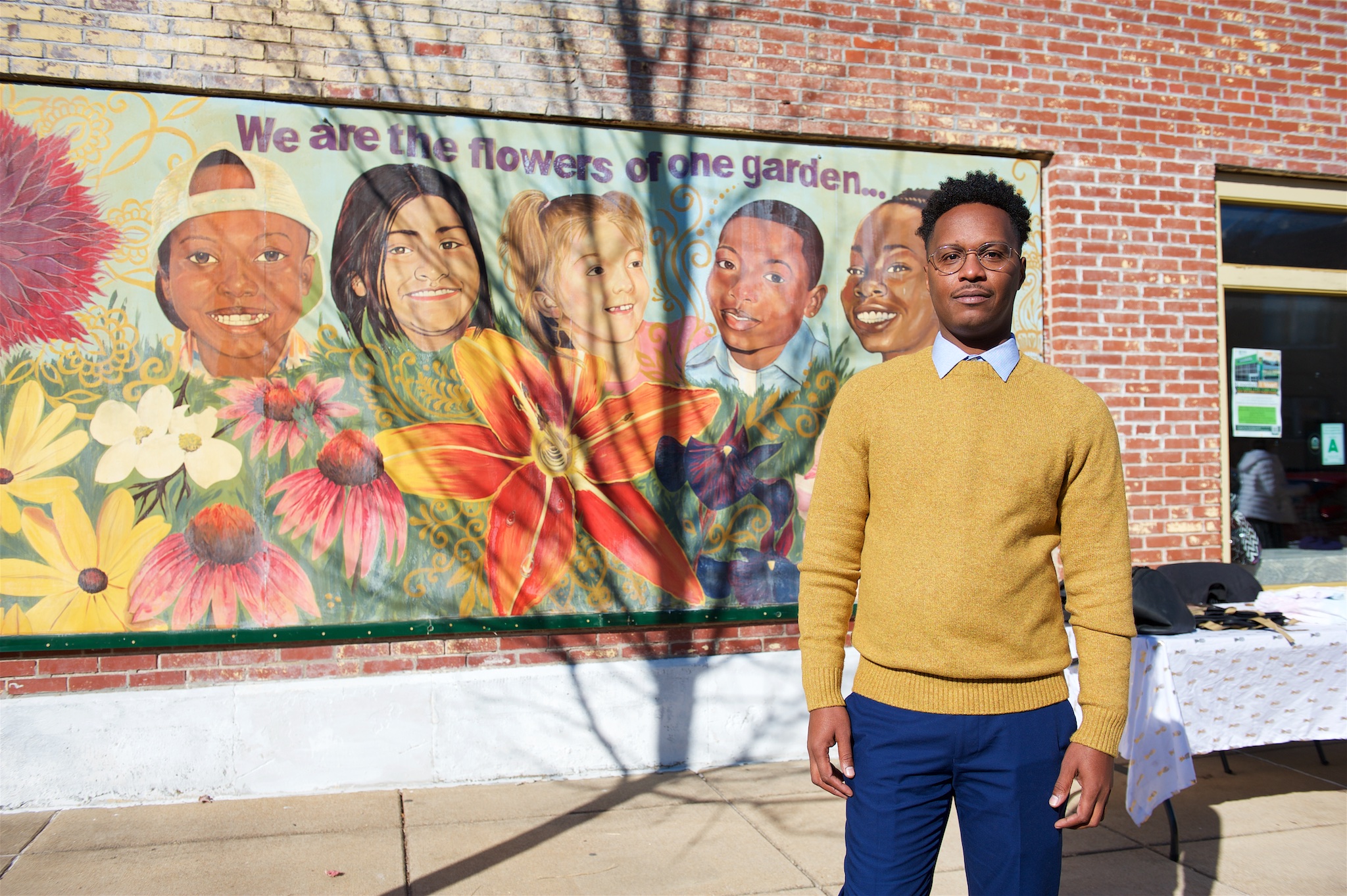
I graduated almost 20-something years ago from high school and there were levels of disparities between the St. Louis Public Schools systems versus Rockwood. Here we are now in the middle of a pandemic and, in my school district — Rockwood — our kids had Chromebooks three years ago. When the pandemic hit, we sent out a message saying, “We’re not really sure if we’re going to come back to school within the next couple of weeks. So take home your computers and Chromebooks and we’ll be in contact?” I teach a college course for a local university and had some administrators and teachers there who were frustrated because it was summer and their school districts were just starting to buy and give out Chromebooks to their kids. How are these kids supposed to win? What are they supposed to do when someone had the technology for three years and was used to being on it and other individuals are just now getting it? To David’s point earlier, there is no report on input and investments in kids. That’s why we need that level of reporting.
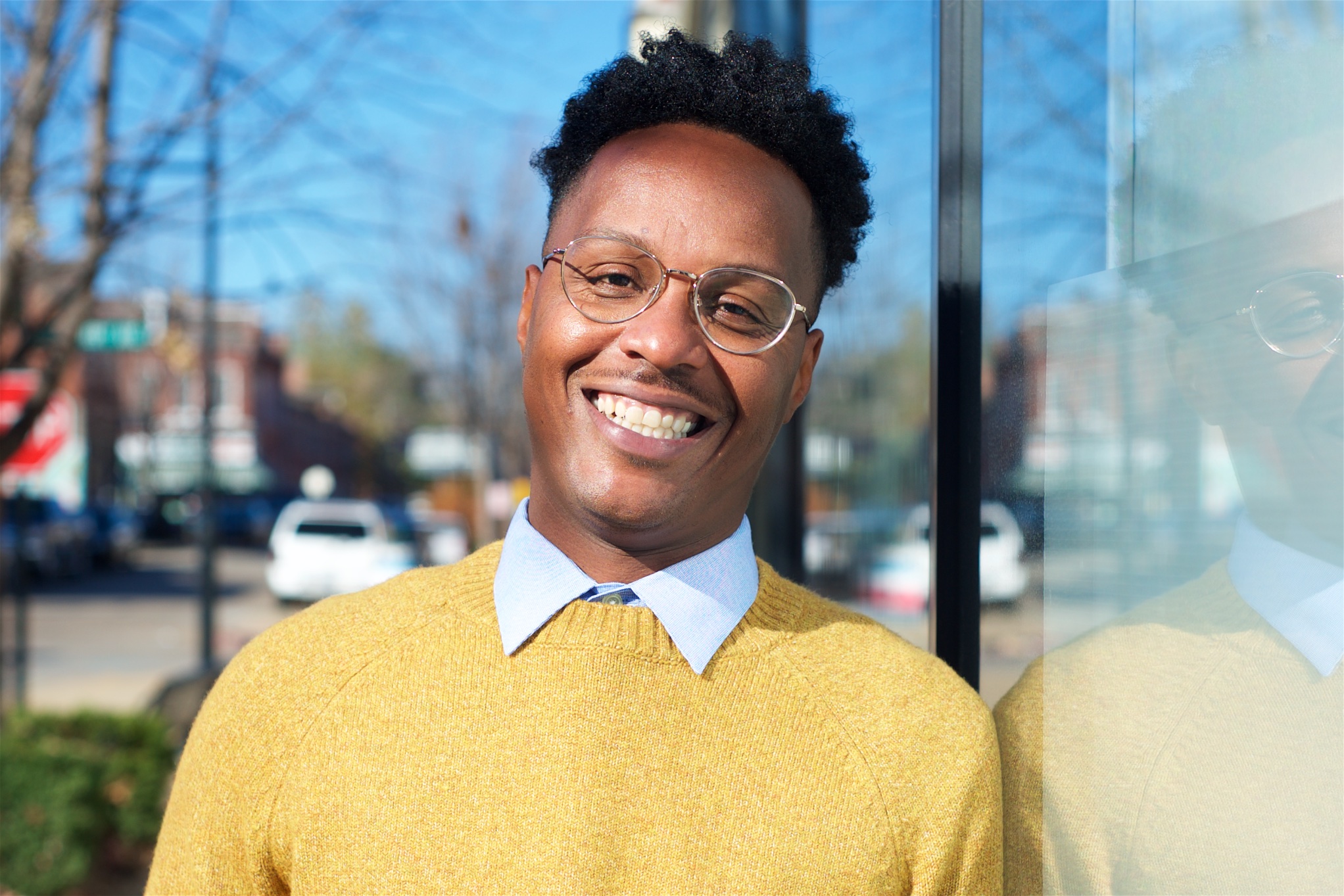
There were definitely some good moments in the VICC program and my favorite came from high school, not even college. I loved participating in it, it was beautiful, and it was amazing because I was living in two worlds. I don’t want to fetishize the violence, but we know what happens in the City. There was no difference in the early 90s. Well, I remember begging my mom for a good six months to be able to spend the night at my White friend’s house. My mom is from Mississippi, so she was like, “No, you’re not spending the night at those White people’s house.” “Mom, c’mon. Let me.” “No, no, no, no, no.”
Finally, she said I could spend the night and I did. My mom packed my bag, so I had my clothes, I had my own bar of soap, I had my own shampoo, my own bath towel, my own toothbrush, my own toothpaste, my own everything. I think about this story which I tell people all the time and most look at me like, “Man, what was so crazy?” Here’s the thing. I came out to Rockwood School District in 8th grade and there were Black friends I met there along the way who had been there since kindergarten. I played basketball, so my friend Graham was like, “Hey, Terry, you should play on my team.” I spent the night at his house on a Thursday, I went to school on Friday, and all these Black kids were around me asking, “Man, how was it? Like, what’d you guys do?”
I was thinking to myself, “Wait a minute. You guys have been out here for eight years and you’ve never spent the night at a White person’s house out here? That White person has never come to your house?” That’s part of the failure of the program. We didn’t talk about these things. It was just, these kids woke up early in the morning, they got on a bus, and they were dropped off. But my favorite moments were just being able to be who I am and then have these people be who they are. And it was just love.
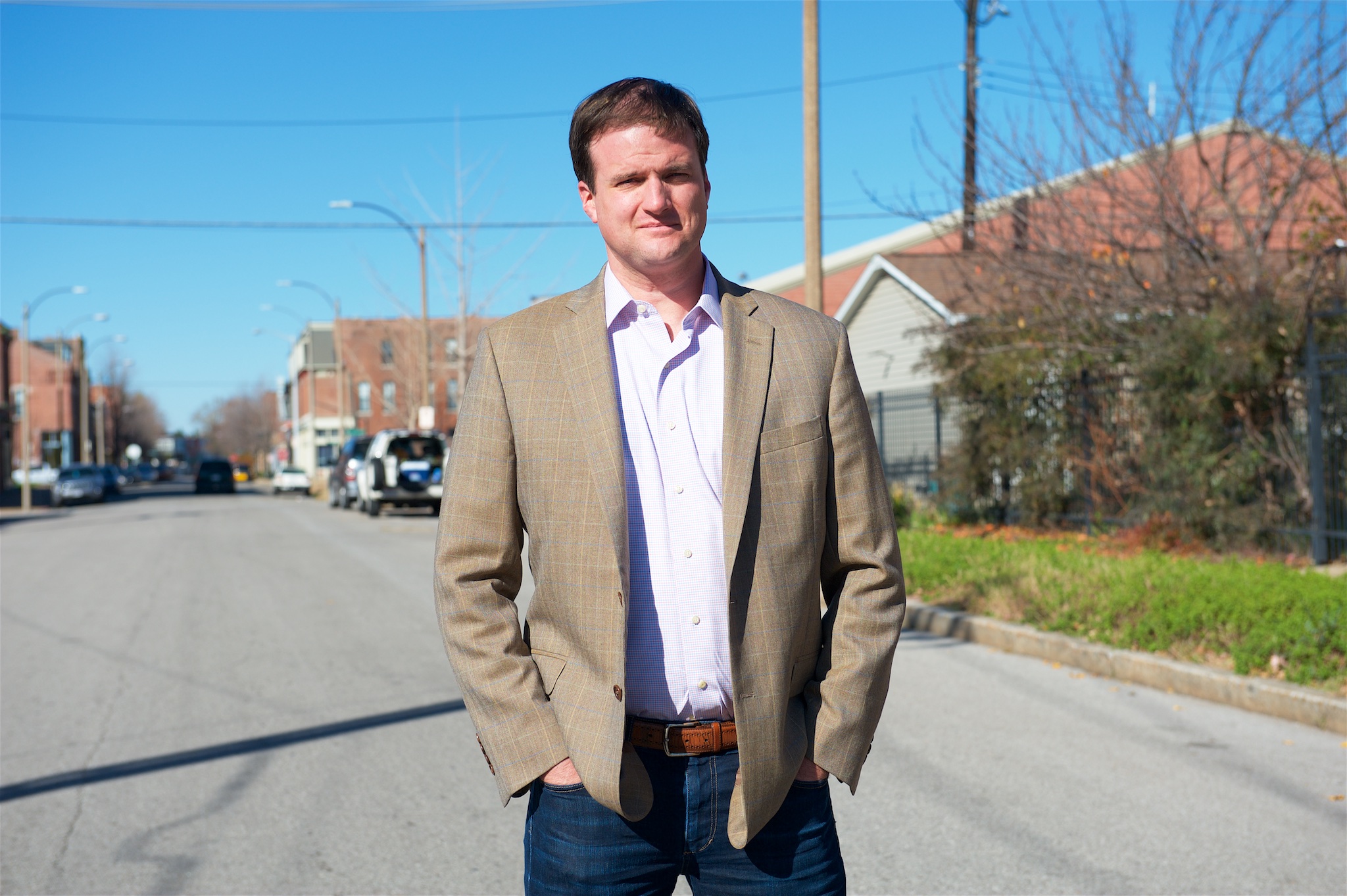
If segregation is illegal, why do you think it still exists in schools?
Dave: My world existed in a six-block area for the most part until I got to high school and started not playing for my school team. When you’re younger, your life is made up of such a small area. And if you look at how St. Louis is and what it takes to unite the divides that are still there and perpetuated, it takes a huge effort to bridge those worlds across the different communities we have. You need to be intentional about it and there has to be something that propels it, because the status quo was built up over so long and that history is still present in reality today.
Our world in St. Louis is defined in terms of where we shop, where we hang out, where we go to school, and all of those things. If you go to other cities, many interactions regularly just happen across cultures and socioeconomic divides.
Dave Leipholtz
Our world in St. Louis is defined in terms of where we shop, where we hang out, where we go to school, and all of those things. If you go to other cities, many interactions regularly just happen across cultures and socioeconomic divides. Here, we are making progress, but it’s still going to require tough conversations and we need to embrace the fact that many of us have not done enough. Otherwise, that ultimately hurts the kids. And the biggest thing is that, in St. Louis, the burden disproportionately falls on kids.
Terry: I hope that last piece is really highlighted in the story because that captured it all. Because people don’t want to be perceived as bad, they just stay in their little safe spaces and we need people to operate and move in their brave spaces. I also think we just have to admit racism and White supremacy have hurt all of us. I don’t want to fight with White people around whether or not they’re good. I want White people to know that, “White supremacy and racism have hurt you, too. You just don’t know it. It’s hurting me and you need to understand it’s hurting you, too. So, guess what? We are both hurt. The difference is, you kind of benefit from it and I don’t. So let’s start from the level of our hurt and talk about these things.” That’s the space. And if we can get into it, we can understand this system.
This is what White teachers, administrators, and school systems say: “I didn’t do this, Terry. I didn’t bring people here. I didn’t own people. I didn’t build this.” And we have to say, “Absolutely. You’re right. And, well, we didn’t start any of those fires in California either, but thousands of acres are no longer and homes are gone. Those fires have hurt us, even though we didn’t start them. Let’s talk about that level of hurt. Let’s talk about what we need to do to make sure that those fires are not starting anymore and about what we need to do to make sure White supremacy and racism are not perpetuated.”
What we really need to do as it relates to kids and taking down this system of segregation is to radically reimagine schools so we can radically reconstruct schools. It’s radical reimagination, radical reconstruction. Why? Because all of those systems were radically created. The only way we’re going to build something anew is to match that same energy. It has to be based on a level of love. And that love is, “I am SO St. Louis and we all are, that we’re going to do whatever we need to do for our city.” And that includes taking care of all of our kids.
Dave: For the next generation of St. Louisans to be given the opportunities they deserve across the board, there has to be a paradigm shift. This is why the education piece is so important, but youth employment opportunities and the wrap-around services are also critical. That’s going to lead to the radical change, the generational change we need. St. Louis is starting to come to grips with its history in a real, prevalent way and in a way that’s part of more people’s daily conversations. That consciousness and willingness to embrace it is significant and going to be a unique process for everybody. It’s an individual commitment, which is really hard because we’re talking about systemic change and lasting impact. To take personal ownership and make the investment is not easy. So we also need to support those doing it around us and do it ourselves. My way of thinking about it is just a piece, because I’m sure there are 500 other ways I’m missing. It’s going to be sloppy and hard. There are going to be growing pains. But the more it’s part of our consciousness and our conversations, we’re going to get better at it.
Terry: We should have open borders with schools to have a regional school system. If the education system is good for the kids in Clayton, then it should be good for the kid in St. Louis City. Because, right now, what’s the incentive for any school system to really try to reach out and help other school systems? I think we should keep kids in their neighborhoods, but the way we do that is to build up systems and schools so they are as good as whatever perception of a good school that we have. And until we get to that point, kids can choose to go wherever they want to go. I know some school systems are small, and maybe we do a lottery system, but we’ll figure it out.
The flipside is that some people may feel like it’s going to close down certain schools. Maybe that’s the case, but I’m definitely open to a regional school approach. And if we can’t get to that point, I’m open to regional course selections. So let’s figure out a way we can put funds together for students who can take calculus but don’t have a course offering in their schools. Can that kid tap into a course taught at Ladue High School by Zooming in to listen to the teacher and getting that lesson? Or, maybe there’s a kid in Clayton who really wants to take a certain class offered at Clyde C. Miller CA. So there’s an inter-exchange of knowledge and of kids in order to not prohibit students.
How will we pay for it? With regional school taxes. That’s getting at the heart of the formula instead of looking at property tax simply as the way we’re going to fund schools. And maybe we do look at property tax, but the property tax collected goes into a regional pot. Because we’re brilliant and have brilliant people, we can figure it out. Maybe 75% of the savings stay where the funds are generated, but there’s equity money designed to support and help school systems without property taxes coming in. In the end, if our policies are not inclusive of funding and money, then I don’t know what we’re talking about.
Dave: Systems reinforce and reflect what we are supposed to care about. So if my town or school district is such and such size, that’s what I’m paying into and that’s what I’m invested in. There’s a mental obstacle reinforced by the divisions and structures we have and how we fund education. Terry’s recommendations adjust what we should be focused on and how we need to broaden our sense of what our community is, what our responsibility is, what we’re invested in, and whose kids are “our kids.”
Terry: I just got really inspired by what you’re saying. The beauty of who we are as a region is that we have to wrestle with that. We’re not at zero. We do some things right. We just have to get over this hump and that’s the hard piece. Yeah, I appreciate my Humans of St. Louis partner. Thanks for being with me on this journey.
Dave: Terry, I don’t know how to tell you this, but I’m going to hound you for perspective and to be part of things and steal as much time from you as possible on projects. So, we’ll be staying in touch whether you like it or not.
Terry: Definitely! We’re a team. And I need your help on some things as well.
What is your vision for an equitable #STL2039?
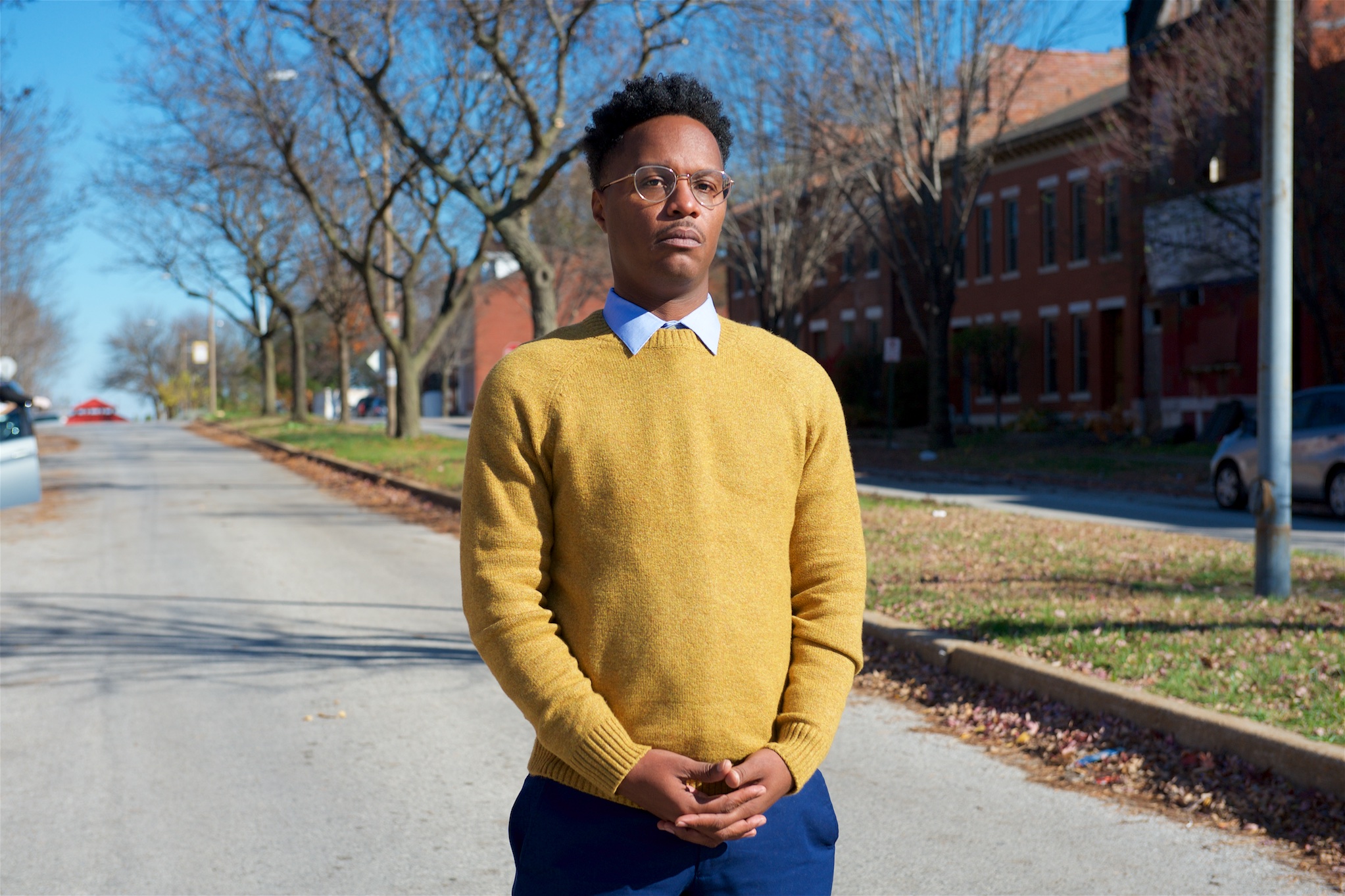
Terry: The Masai people greet each other by saying, “And how are the children?” And then the response is, “All the children are well.” For #STL2039, I want to walk past anybody in the City of St. Louis, we stop to say, “Hey, how are the children?” and we all respond, “All of the children are well.”
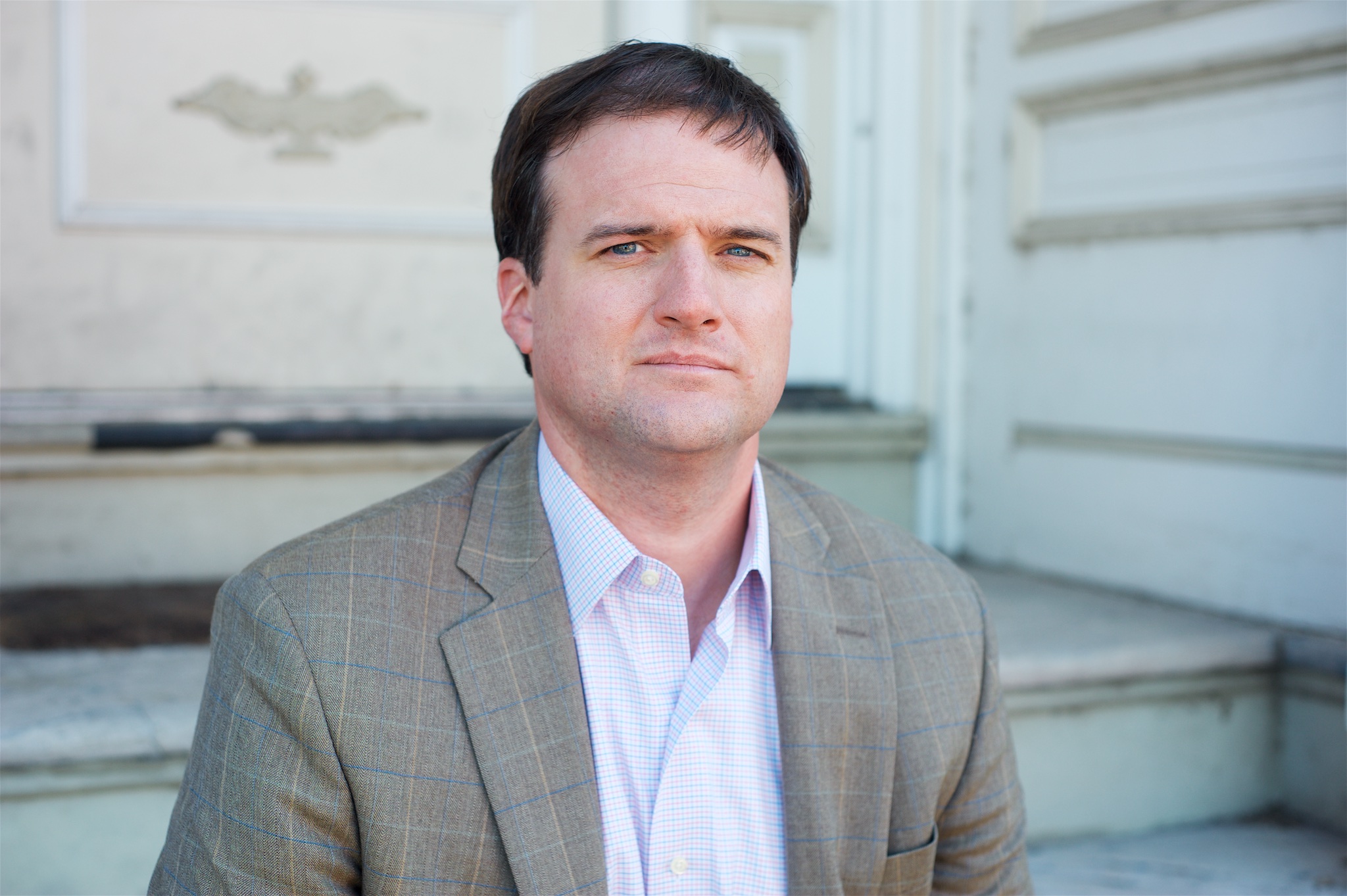
Dave: That’s vision and I would piggyback off of that to say that’s my hope for all of the children across the St. Louis region. There are places throughout St. Louis where you could say “all of the children are fine” right now. For us as a region, we also know areas where that hasn’t been true. If we care about all the children and the community that is even 10 miles away just like we do our neighbors, and if we care about those kids in the same way we care about the kids who go to our neighborhood school, that’s when the #STL2039 vision has been successful. That level of commitment and investment — emotionally, mentally, and strategically — is going to be what it takes to change the educational landscape and the opportunities we provide children throughout St. Louis. Children and students in St. Louis bear far too much of the burden. So when we embrace a broader definition of community and what “all of the children” means, that’s when we’re going to be successful. It’s when we start knocking down these walls that are limiting what we tell ourselves we should care about and be concerned about — when we’re not tiptoeing around the issues, we’re embracing them. And it’s when we’re going to have more Terrys saying, “I’m SO St. Louis! I’m so proud of it here.”
Dr. Terry Harris
Director of Student Services for Rockwood School District
Dave Leipholtz
Executive Director of the Center for Civic Research and Innovation, an initiative of the St. Louis Community Foundation


